EDITION 152 - 2025
THE E-JOURNAL OF PORTS AND TERMINALS
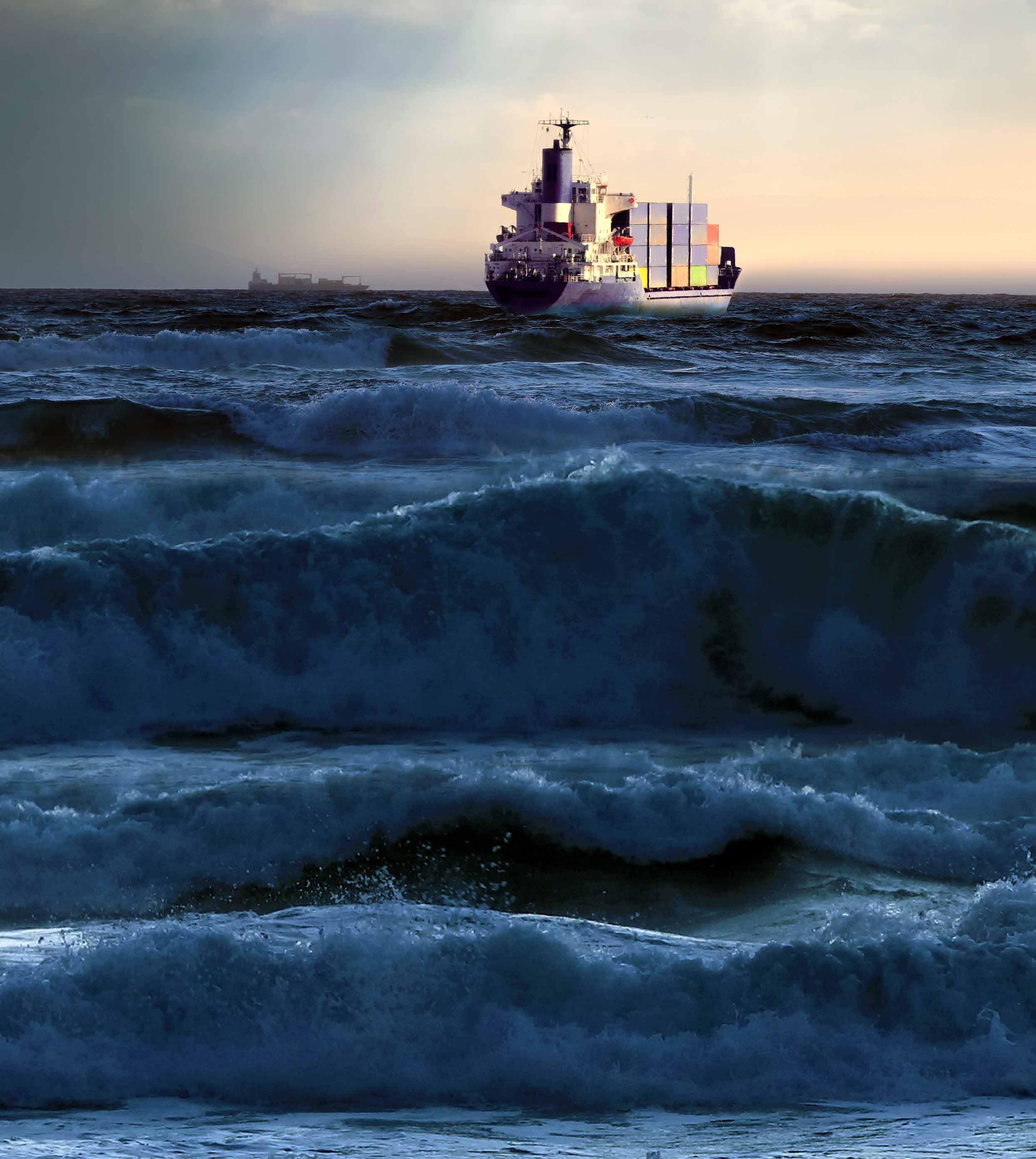

EDITION 152 - 2025

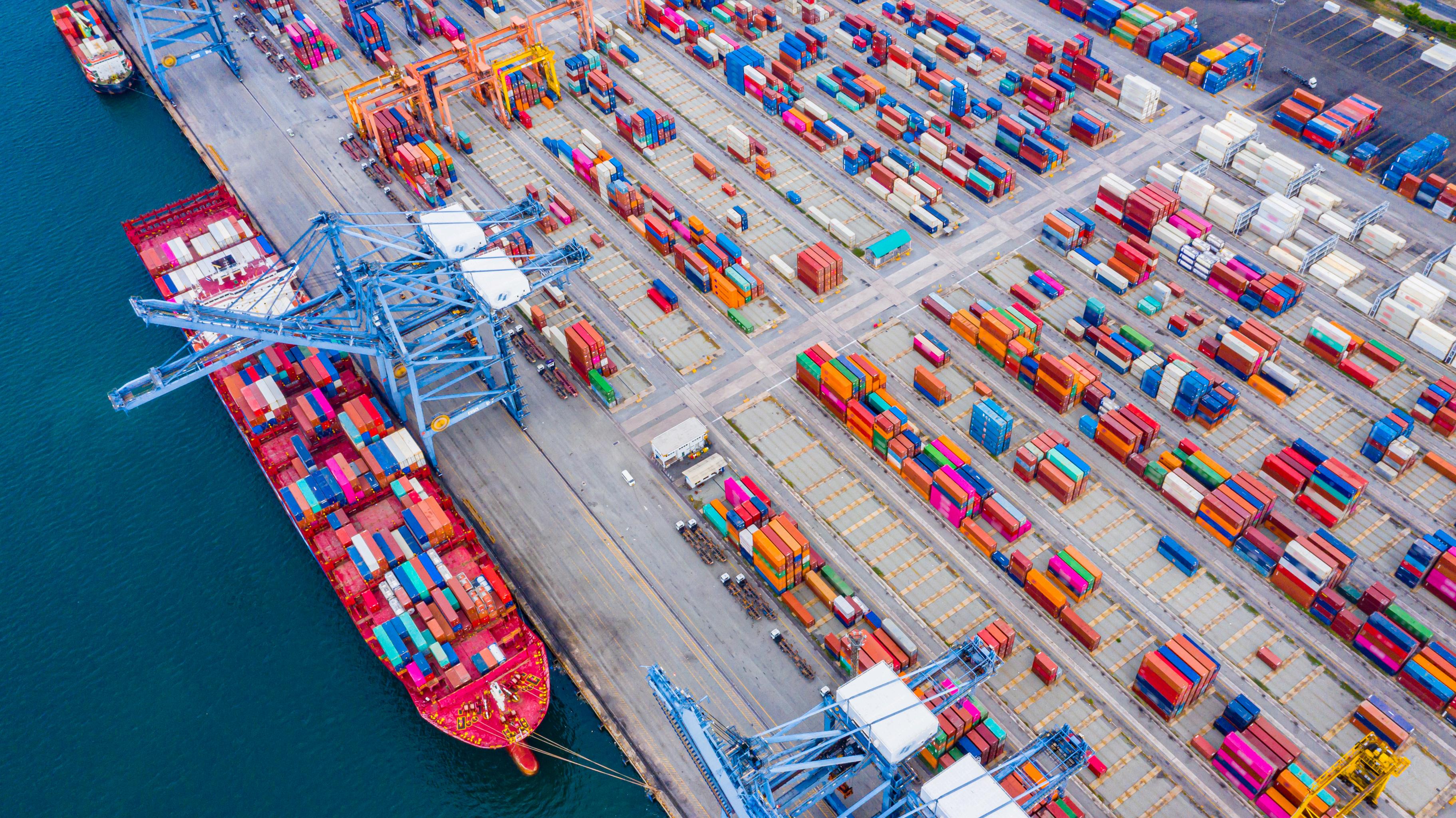

Delegates
Speakers
Sessions
PortTechnologyInternational'sflagshipevent,the ContainerTerminalAutomationConference(CTAC),is headingtoKualaLumpur,Malaysia.ThiseditionofCTACw introduceaneweventtailoredtotheAsianmarket,with high-qualitycontentandsolutionsfocusingontheunique challengesandopportunitiesintheregion.
Immerseyourselfintwoaction-packeddaysfilledwith engagingcontentwhereyoucanlearnfromindustry leadersandexplorehowtheworld’stopterminalsar transformingtobecomefaster,safer,andmore sustainable.Plus,therewillbetimededicatedto networking,includingaWelcomeDrinksreception, Networkingbreaks,andmore–perfectforhelpingbo yourbusinessconnections.
Secureyourticketnowtoavoidmissingout!
8 - 9 September 2025
Kuala Lumpur Malaysia

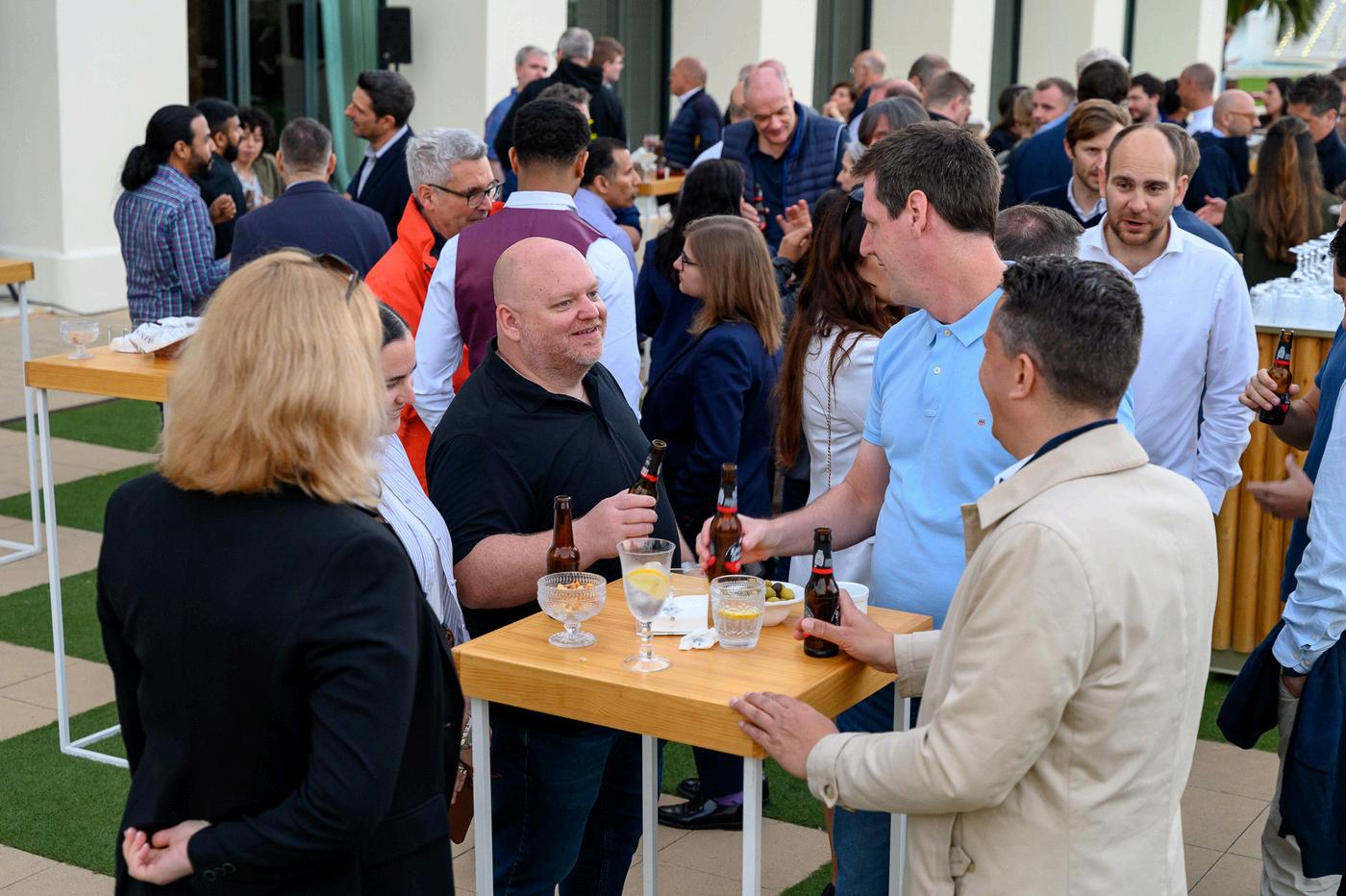
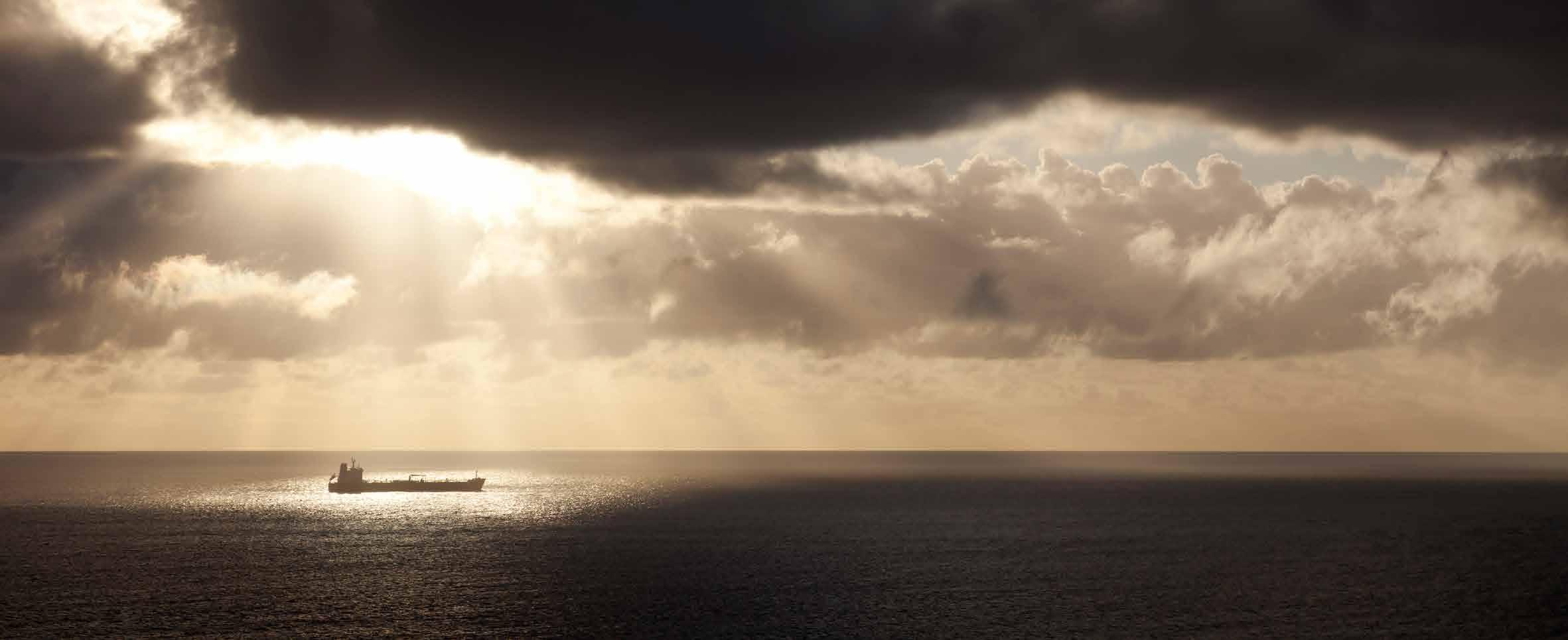
In today’s climate of constant disruption, maritime supply chains are under pressure like never before. What used to be isolated incidents – extreme weather events, policy shifts, and geopolitical escalations – have become persistent and interconnected challenges. As volatility becomes the norm, ports and logistics providers must rethink how they plan, invest, and adapt to stay ahead.
Against this backdrop, we’re pleased to welcome you to another edition of PTI’s e-journal! In this issue, we explore the key trends shaping the maritime industry and share insights from professionals on the ground, those experiencing global disruptions first-hand.
We open our journal with a closer look at the rising physical risks facing port infrastructure. Armada’s latest report highlights a worrying trend: increasingly severe storms, like those forecast for the 2025 Atlantic hurricane season, are no longer rare anomalies. They threaten not just daily operations, but also long-term financial stability and safety. Ports in high-risk zones need to reassess their insurance strategies to ensure they can recover quickly and avoid prolonged disruption.
Operational readiness is another critical piece of the puzzle. As CM Labs notes, more ports are adopting high-fidelity simulation training to better prepare equipment operators for real-world challenges. This isn’t just about improving safety. It also helps reduce delays and tackle labour shortages by making onboarding faster, more scalable, and more effective.
Looking at the global picture, our interview with project44 sheds light on how geopolitical tensions are disrupting trade routes and reshaping supply chains. Their analysis of the 2025 US tariff increases on Chinese imports shows how shipping flows are being redirected, investment plans frozen, and supply chains diversified into countries like Vietnam, India, and Mexico. But this shift brings trade-offs. In the scramble to reroute goods, environmental goals risk being deprioritised as companies chase lower costs and faster delivery.
To stay agile, many are rethinking how they manage assets. OVL Container sits down with us to bring attention to oneway container leasing as a smart, flexible option that allows shippers to reach inland or disrupted markets without the limitations of traditional container models. Combined with AI-powered tracking and optimisation, this approach brings much-needed adaptability to a volatile landscape.
Still, resilience is not just about tactical fixes. According to FourKites, the real transformation lies in predictive, AI-driven platforms that can automate workflows, reduce inefficiencies, and provide endto-end supply chain visibility in real time. This marks a shift from reactive problemsolving to proactive, intelligent operations, a vital change in a world where multiple disruptions can hit at once.
At the same time, DP World is pushing for a more unified digital transformation across Europe’s maritime logistics sector. Fragmented digital systems are limiting performance. To compete globally,
Margherita Bruno, Managing Editor

Europe must treat digital infrastructure as essential, standardise platforms, harmonise policy, and build interoperable systems that enable seamless crossborder coordination.
PTI’s Corner returns with a renewed focus on innovation and adaptation. First, our News Editor, Dom Magli, speaks with Rafael Velásquez, Director of Optimisation & Integration at INFORM, about how AI is transforming terminal operations. From the digital-first Duisburg Gateway Terminal to legacy intermodal hubs, INFORM’s modular, scalable software is enabling smarter decision-making, smoother automation, and greater resilience tailored to the specific needs of each terminal.
Finally, our Reporter, Syed Rakin Rahman, offers a deep dive into the geopolitical turbulence reshaping maritime trade in 2025. His mid-year analysis examines how intensifying US–China tensions, tariff volatility, and rising security are forcing shipping routes and port operations to adapt in real time. His reporting highlights a critical truth: strategic foresight and adaptability are now indispensable in navigating this new era of global trade.
A big thank you to everyone who helped bring this edition together, and to our readers, thank you for sticking with us. We hope you find this issue as insightful as ever.
In our next edition, we’ll say farewell to summer and turn the page to explore the strategies driving port decarbonisation and the broader push for sustainability in shipping. See you then!
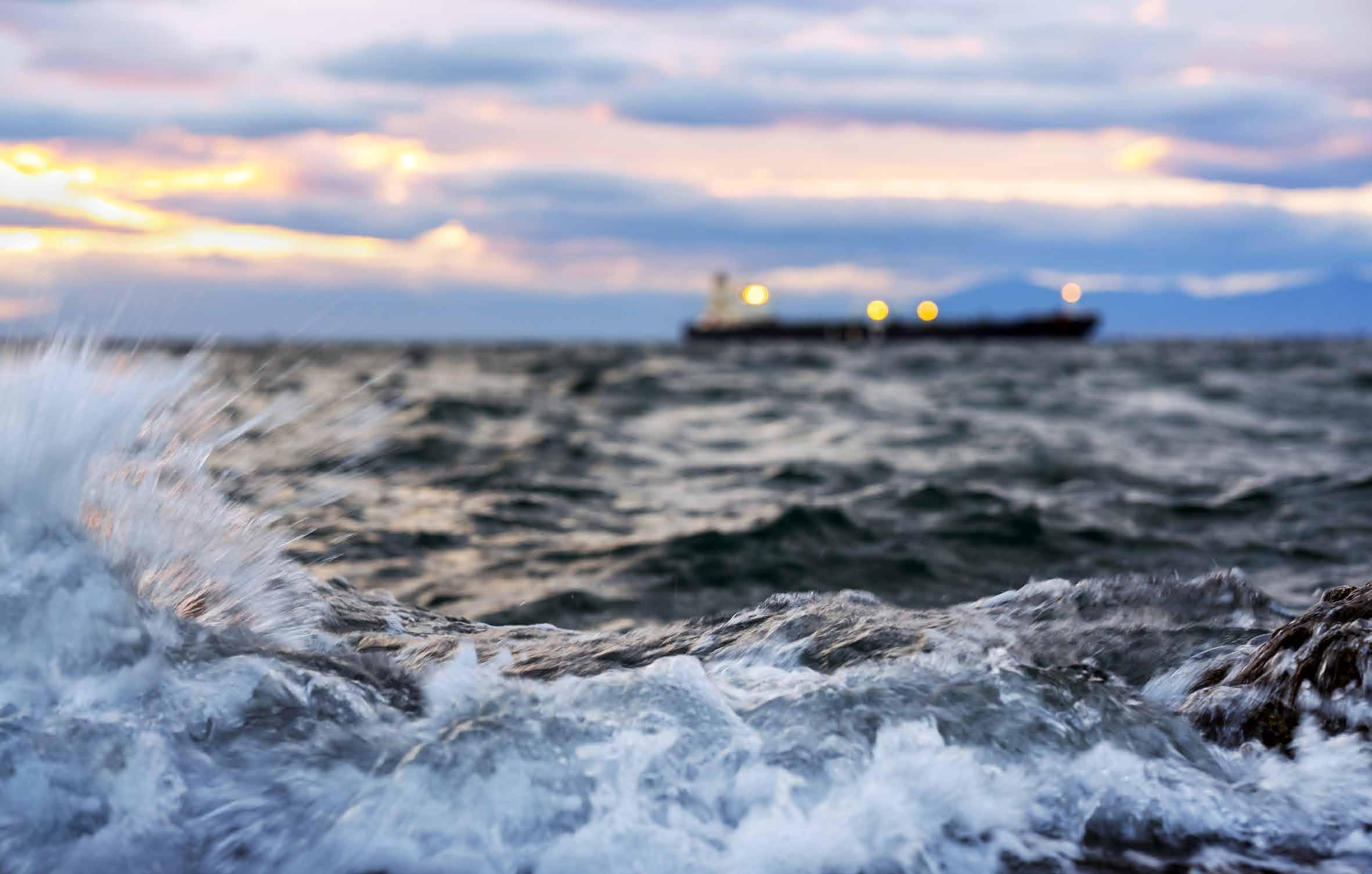
4.
NAVIGATING HURRICANE THREATS: INSURANCE STRATEGIES FOR PORTS AND SHIPPING
Ed McNamara, CEO, Armada Risk Partners
7.
HOW PORTS USE SIMULATION TRAINING TO MINIMISE SHIPPING DISRUPTIONS
Devon van de Kletersteeg, Product Growth Manager, CM Labs
11.
NAVIGATING DISRUPTION: TARIFFS AND PACIFIC SHIPPING FLOWS
Dom Magli, News Editor, Port Technology International, interviewing Jenna Slagle, Senior Marketing Data Analyst at project44
15.
SOLVING SUPPLY CHAIN DISRUPTIONS WITH ONE-WAY CONTAINER LEASING
Syed Rakin Rahman, Reporter, Port Technology International, interviewing Osmo Lahtinen, Managing Director, OVL Container
18.
WHEN DISRUPTION BECOMES THE NORM: BUILDING OPERATIONS THAT CONTROL THE CHAOS
Kevin Krukis, Managing Director - German Operations, FourKites
22.
TOWARD SMARTER SUPPLY CHAINS: EUROPE NEEDS INTEGRATION, NOT JUST INNOVATION
Mark Rosenberg, Chief Commercial Officer (Ports and Terminals), DP World Europe
PTI’S CORNER
26.
IN CONVERSATION WITH: INFORM. TAILORED AI FOR TERMINAL GAINS
Dom Magli, News Editor, Port Technology International, interviewing Rafael Velásquez, Director Optimisation & Integration, INFORM Terminal & Distribution Center Logistics
29.
GEOPOLITICS AT SEA: NAVIGATING THE STORM IN 2025
Syed Rakin Rahman, Reporter, Port Technology International
info@porttechnology.org www.porttechnology.org linkd.in/porttech

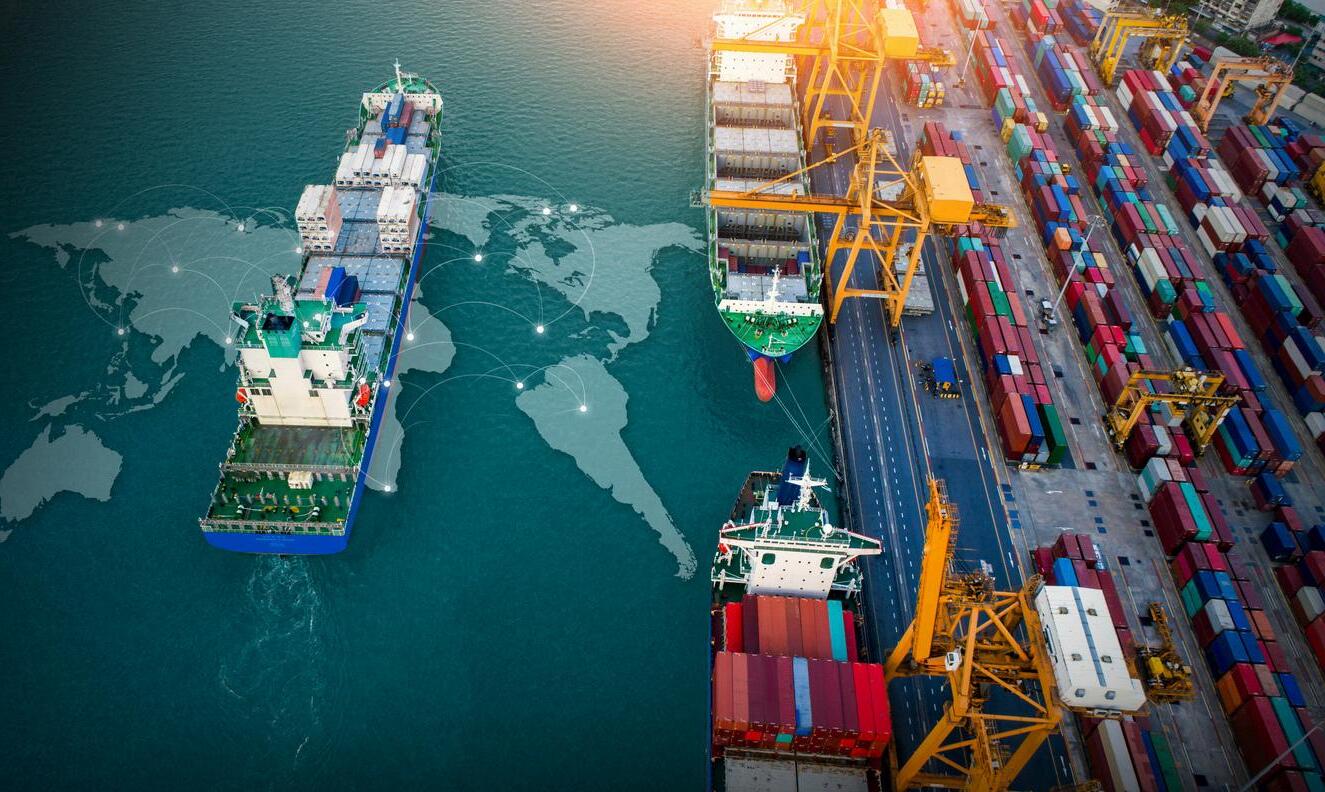
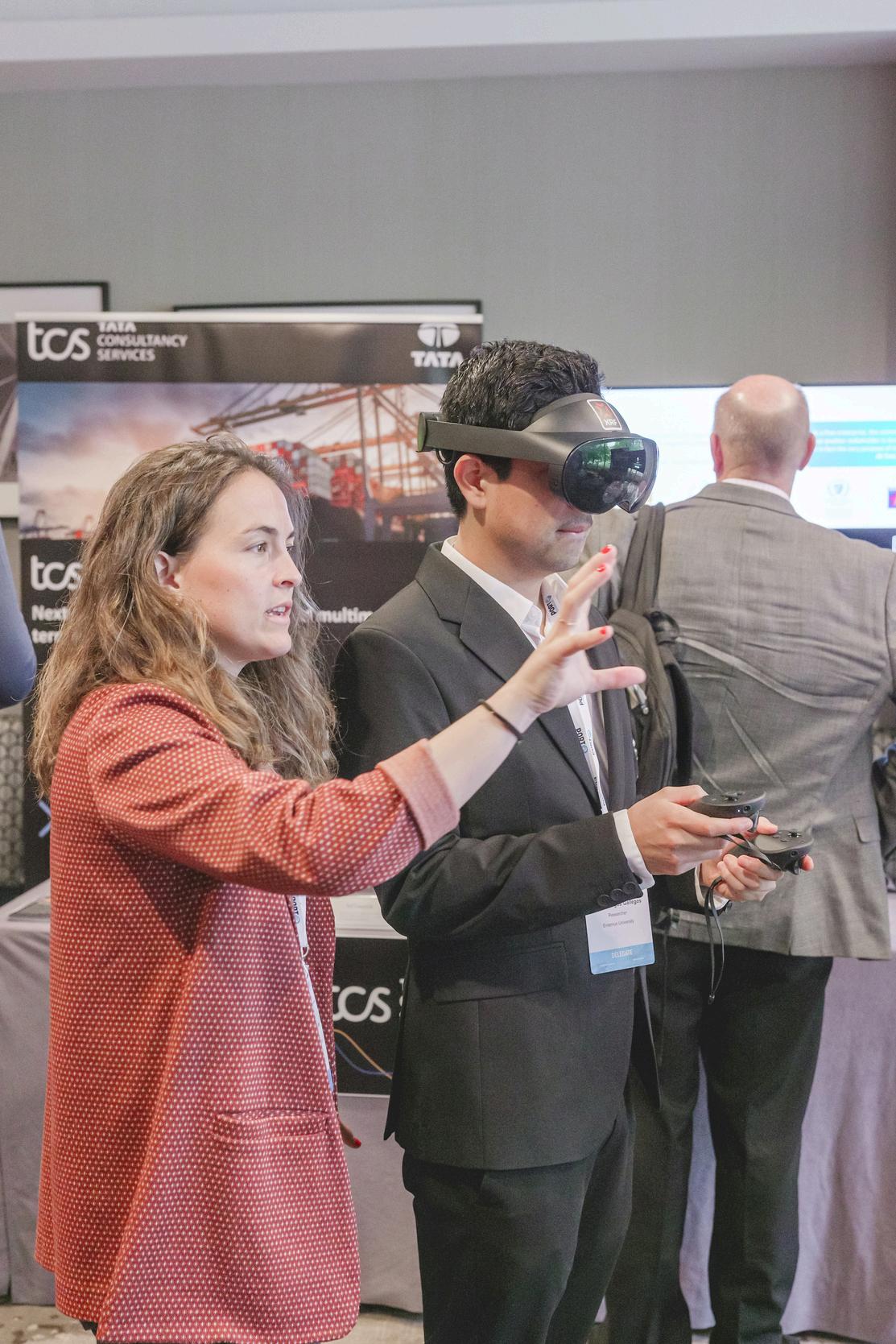


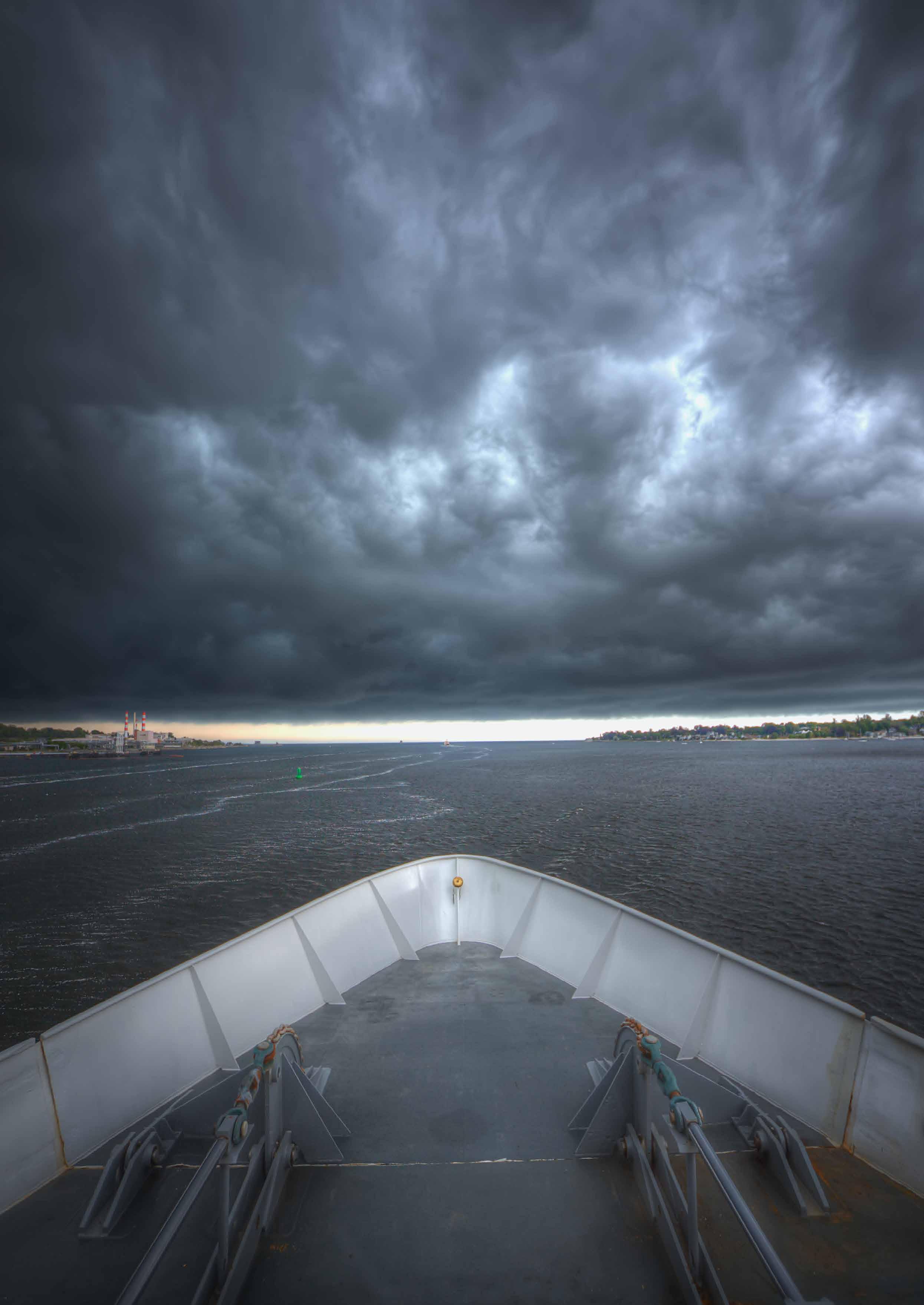


The 2025 Atlantic hurricane season is shaping up to pose increasingly serious threats to shipping, coastal ports, and surrounding areas.
With climate experts warning that this year’s extreme weather could surpass that of recent seasons, which saw widespread damage from multiple highintensity hurricanes, the resilience of ports and their ability to protect employees, assets, and operations will be sorely tested.
Ports in the Caribbean, Gulf Coast, and Eastern Seaboard are on the frontline of risk.
Comprehensive marine insurance coverage will be critical to ensuring they are not exposed to massive disruption from severe damage or prolonged port blockage.
Given the increasing risks from extreme weather driven by climate change, ports must ensure they have the proper insurance in place to take immediate action and restore operations as quickly as possible.
Much can, and often does, go wrong in ports when extreme weather hits. The lives of employees are at risk, assets can be severely damaged, and ports can end up with a total blockage. It is imperative that operators regularly – and rigorously – review their insurance coverage so that they are adequately protected and equipped to take control of the recovery operation.
The threats are real. Hurricane researchers at Colorado State University (CSU) have released some of their most severe forecasts to date for the ongoing season, which officially runs from 1 June to 30 November.

CSU's April outlook predicted 17 named storms with nine hurricanes, four of which are expected to reach Category 3 or higher. This level of storm activity is about 125 per cent above the average for the past 30 years. Moreover, there is a 51 per cent chance of a major hurricane making landfall in the US, compared to the historical average of 43 per cent.
CSU’s projections are mirrored by AccuWeather, which is similarly forecasting 13 to 18 named storms with 7 to 10 hurricanes. Both agree that current climate conditions are favourable for the development of high-intensity cyclones, placing ports, commercial shipping, and offshore facilities at serious risk.
We saw in 2024 that the threat is widening as changing atmospheric patterns lead storms into historically lower-risk areas. When several hurricanes strike in quick
succession, response teams can be overwhelmed, and rescue efforts hampered.
Hurricane Francine severely impacted Gulf Coast ports in September of last year, leading to the shutdown of major energy ports, disrupting about 1.5 million barrels of oil production, and sparking a 2 per cent increase in crude oil prices.
That same month, Hurricane Helene struck Florida, prompting to declaration of Port Condition Zulu at several ports, including Tampa, Canaveral, and SeaPort Manatee.
Vessel traffic and cruise operations were suspended, disrupting cargo operations and cruise schedules with substantial financial losses for both the ports and shipping companies.
Two months earlier, Hurricane Beryl forced the closure of numerous ports along the Texas coast, including Houston, Corpus

Christi, and Brownsville, disrupting logistics and supply chains across various industries.
These events underscore the importance of maintaining control of the situation with the right insurance coverage. Relying on government intervention to reopen your port—when they have no spare capacity to help—is a dangerous strategy, as we saw in 2024.
In light of these escalating risks and the stark warnings from hurricane forecasters, I would strongly advise maritime operators—particularly port authorities and shipping companies—to proactively review their insurance coverage. Key areas of focus should include:
• Business Interruption Coverage: Ensure your policies adequately cover both revenue losses from port closures or operational disruptions and the cost of restoring operations as quickly as possible.
• Port Blockage Insurance: Consider coverage for losses due to vessels being unable to access or leave ports.
Liability Coverage: Make sure that liability limits are sufficient to cover potential third-party claims for injury or property damage resulting from hurricane-related incidents.
Supply Chain Disruption
Clauses: Shipping lines should examine their policies for clauses addressing disruptions to the wider supply chain caused by extreme weather.
Named Windstorm
Deductibles: Understand the specific deductibles that apply to hurricane-related damage.
Only through a proactive and rigorous approach to insurance coverage can everyone in the maritime industry better navigate the real and increasing threats from the Atlantic hurricane season and ensure greater resilience in the face of extreme weather.
Ed McNamara is the CEO of Armada Risk Partners, a Cleveland US-based port insurance broker that was a winner of the 2022 Fast Brokerage Award.
Ed has worked in the insurance industry for over 15 years. Before his current role, he operated his own technology company, demonstrating his lifelong interest in digital communication, and is well-versed in cyberattack planning.
Armada Risk Partners is a Cleveland-based commercial insurance broker that shields companies and their employees from catastrophes by providing insurance solutions. The company is a global ports insurance specialist and further offers property and casualty, health and benefits, private risk, and life insurance expertise.



Devon van de Kletersteeg, Product Growth Manager, CM Labs
Port disruptions stem from many sources and can have a serious impact on operations. Labour disputes, accidents, equipment failures, geopolitical tensions, sudden weather changes, and other disruptions may range in severity, but they all carry the same consequences: reduced productivity, lower profitability, and increased risk.
This is where simulation training can make a difference. A highfidelity simulation training system— consisting of simulators, equipment training packs, and instructor tools—recreates realistic scenarios, enabling equipment operators to develop real-world skills without incurring the usual costs, time commitment, and risk associated with learning on live machines. A simulated crane’s cables sway in the wind, respond to real-world physics, and can recreate issues that operators frequently—or occasionally—encounter in the field. While simulation training cannot prevent a pandemic or control the weather, it can help equipment operators prepare for unexpected scenarios and respond with speed and skill. When confronted with the next disruption, equipment operators trained on simulators are better equipped to mitigate delays, safety risks, and any associated costs.
Simulation training provides five key benefits over traditional methods, which help to better prepare workforces for unexpected disruptions or spikes in volume.
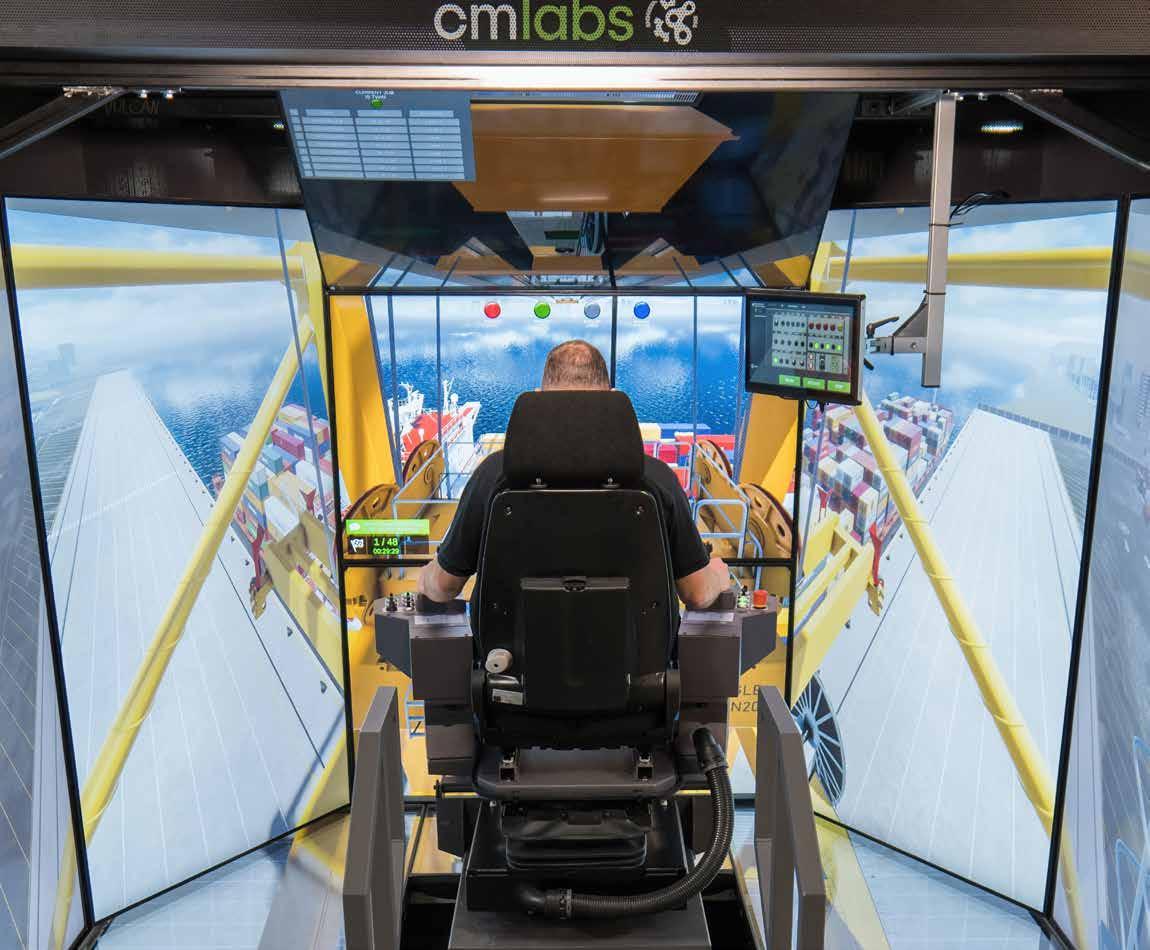
A highly trained and experienced workforce helps shield ports from the effects of disruption. Skilled equipment operators can better respond to spikes in demand, exception scenarios, and other disruptions as they occur. That said, training workers takes time, especially when onboarding new recruits.
Simulation training can reduce training time by up to 40 per cent. Novice operators can use simulators to gain a true sense of the machine, familiarise themselves with the controls, and reach proficiency faster.
Tony Couzner, Training Superintendent at Flinders Adelaide Container Terminal, explained: “At times, the trainees
experience a real sense of déjà vu when they’re out on the real crane—they say, ‘you know, this could almost be the simulator.’” Couzner went on to explain the impact simulation training has had on his operation: “Typically, a new crane operator requires 180 hours of training on average to meet the required proficiency standards. With the simulator, the new trainees have managed to meet and exceed the level required in around 100 hours.”
Inexperienced operators in the field naturally slow down operations. Eric Battersby, Bulk Terminal Manager at the Port of Corpus Christi Authority (PCCA), noted

that this can have a significant impact on overall productivity: “Productivity is a big driver behind bulk operations. When you put somebody who’s unfamiliar with the machinery up there, it’s not long before you start getting questions as to why productivity is falling or why it’s taking longer than it had before.”
When a port is already navigating disruptions, these added delays can exacerbate problems. Simulation training enables operators to gain skills for success in a controlled, digital environment, without impacting live port operations or being restricted by shipping schedules.
Couzner elaborated: “The biggest advantage we have now is continuity. We can start an operator’s training, and we don’t interrupt it. If you’re teaching out on the real crane, it’s a hit-andmiss situation. The crane might be required for operations, and you lose it from training.”
Self-directed exercises and structured training paths make it easier for instructors to plan and manage sessions. Simulation training systems log key training metrics and trainee progress,
allowing instructors to monitor performance and provide feedback. As a result, the system allows instructors to onboard new recruits effectively while navigating competing demands in highpressure settings.
In addition to bringing novices up to proficiency quickly and with minimal disruption to operations, simulation training can also help experienced operators refine their skills and efficiency. Even marginal gains in performance can reduce berth times and operating costs, which can be crucial during unexpected surges in demand. For example, one analysis found that increasing a ship-to-shore crane operator’s productivity from 15 to 19 moves per hour cut the machine time required to move 184 containers by 2.5 hours, delivering an estimated saving of around $58,050 over 15 shifts. Spread across an entire team, these improvements can go a long way to mitigating the disruption caused by unexpected surges in shipping volume.
Simulation training can support ports during crises, but it also helps prevent them. By allowing trainees to practice—and make mistakes—in complete safety, simulators can be a crucial tool in preventing some safety incidents and their associated disruption from occurring in the first place.
Ports can even use simulation training to improve safety training as a whole. For example, exercises replicating past safety incidents can teach equipment operators how to respond appropriately and avoid that same type of accident in the future.
Instructors can also simulate exception handling scenarios or equipment malfunctions. If a twist-lock fails or a lift goes awry, the swift reaction of the equipment operator may be the only thing preventing a disaster. Given that these scenarios are simply too dangerous to replicate in the field, simulation offers the only way for ports to train operators for them. Instructors can inject faults into the simulation at will, and—without warning—increase wind speeds to dangerous levels or reduce visibility,
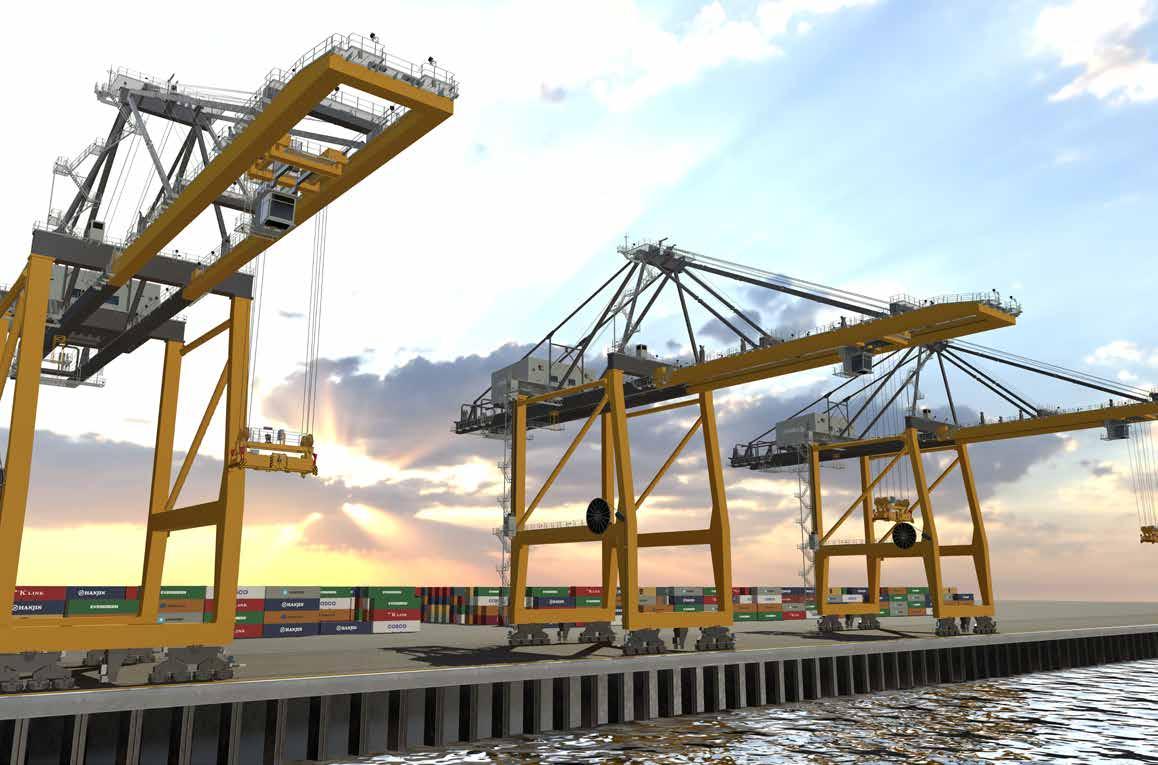
forcing the trainees to respond safely and gain real experience they can use in the field.
Trainees can fail, make mistakes, and push machines to the limit. No matter how poorly a training exercise goes, simply resetting the exercise provides an instant opportunity to try again. This allows the equipment operator to practice handling disruptions before those events impact realworld productivity.
The rollout of new heavy equipment at a port can be both a boost and a drag on productivity. Ideally, new equipment is safer, more reliable, and allows for greater productivity. However, there is an inevitable ramp-up time as operators become accustomed to the new machine. This is true for all equipment changes, but becomes especially pressing when a port transitions to automated and semiautomated operations.
Simulation enables both new and seasoned operators to train on new equipment before deployment. For instance, they can practice working with camera views when transitioning from manual to remote operations. This shortens the ramp-up time and allows operators to work at or near full productivity from day one.
Simulation also helps tackle long-term challenges like labour shortages. Younger workers increasingly seek white-collar roles in urban environments. Simulation training—while far more advanced than gaming—offers a familiar and engaging format that appeals to new talent.
Some ports invite students to test simulators at job fairs to garner attention; others, like the Port of Tilbury, have found great success in using simulators to appeal to veterans. “The military are fascinated by what we were doing with simulation,” says Harper. “It’s a remarkably effective tool for recruitment.”
Investing in simulation also demonstrates an organisation’s commitment to safety and staff development. This can, in turn, help to curb turnover as equipment operators feel valued and see a clear path for career progression. Seasoned operators value the chance to learn new equipment and advance their careers, while the digital environment lowers the barrier to entry for new operators. People who would have otherwise never considered this career path can try out a simulator and dispel their apprehension.
Simulation training enhances port resiliency, boosts workforce development, and increases operational efficiency. Taken as a whole, it can significantly reduce the costs and delays of an unexpected disruption. As shipping volumes grow, ports must adopt proactive strategies to ready their teams. Ports that adopt simulation training today will be best positioned to navigate future disruptions with agility and resilience tomorrow.
Devon van de Kletersteeg is a Product Growth Manager at CM Labs, leveraging his engineering background to drive market expansion and product alignment. He focuses on bridging simulation technology with real-world training needs, ensuring CM Labs’ solutions continue to evolve and deliver impact across industries.
With over 2,000 installations in 50 countries, CM Labs is the global leader in simulation training solutions for heavy equipment operator training in the construction, utilities, industrial, and ports sectors. Backed by more than 25 years of experience, numerous awards, and more than 300 academic papers, CM Labs has earned global recognition for the quality of its solutions and commitment to innovation.
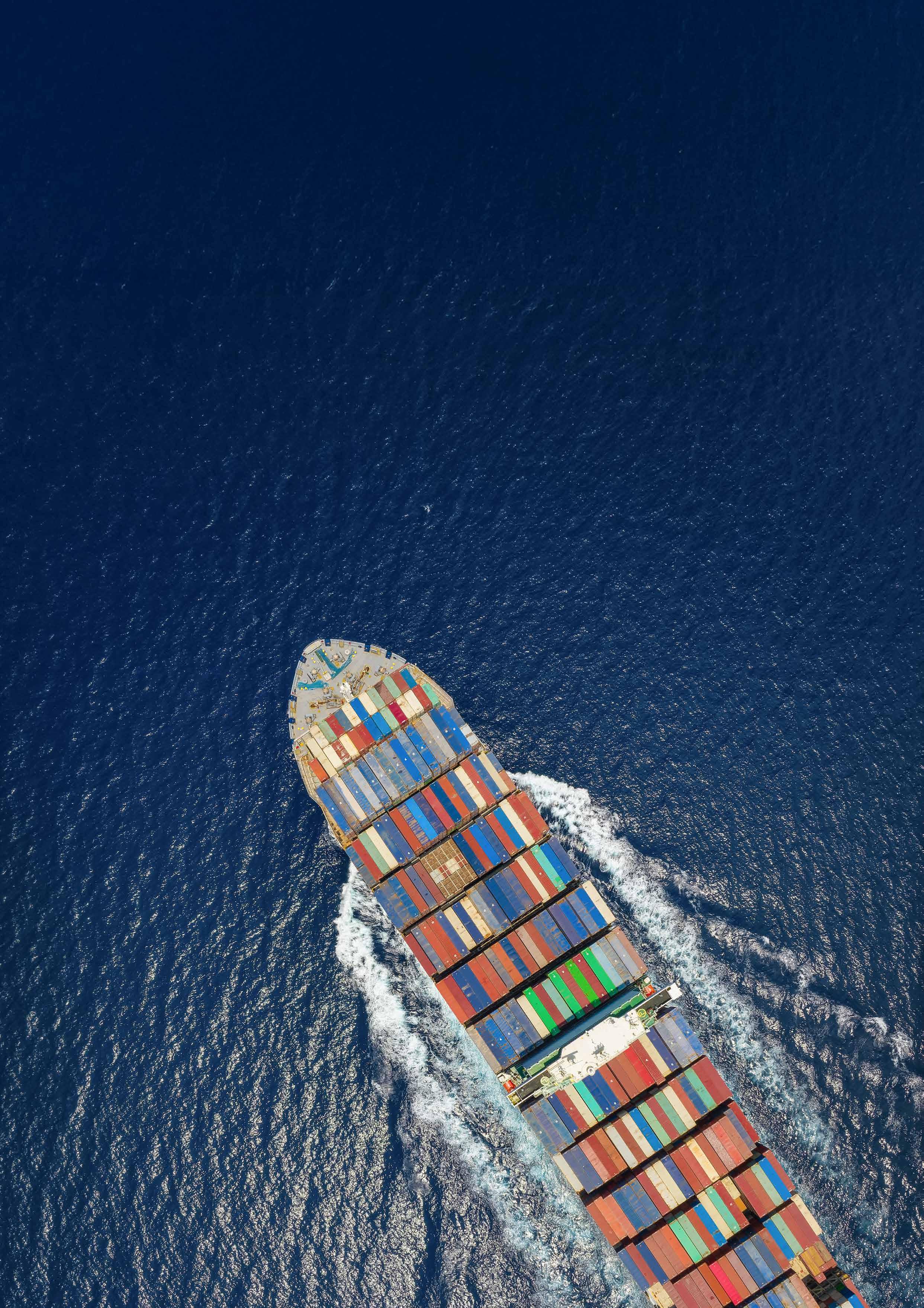



Dom Magli, News Editor, Port Technology International, interviewing Jenna Slagle, Senior Marketing Data Analyst, project44

As the US raised tariffs on Chinese goods in 2025—reaching as high as 125 per cent before settling back to 30 per cent—global maritime trade routes have been thrown into flux. From declining transpacific volumes and surging blank sailings to shifting sourcing strategies and investment uncertainty, the effects are rippling across ports, carriers, and supply chains worldwide.
To understand the scope of these disruptions, we spoke with global logistics analysts and industry experts, including Jenna Slagle, Senior Marketing Data Analyst at project44. Slagle provided key insights into how real-time data trends are reflecting—and amplifying—the consequences of tariff volatility on China–US. shipping corridors and port activity across the Pacific.
How have US tariffs on Chinese goods in 2025 affected global maritime trade routes and shipping volumes across the Pacific?
The sharp increase in tariffs, coupled with earlier inventory pullforward, has led to a significant decline in demand for goods shipped from China to the US. As a result, the number of blank sailings on China–US trade lanes has surged, as illustrated in the chart below. Following the tariff hike to 125 per cent, scheduled blank sailing rose dramatically—from just 1 to 11, representing a 1,000 per cent increase. However, with tariffs subsequently reduced to 30 per cent, the number of blank sailings has begun to stabilise.
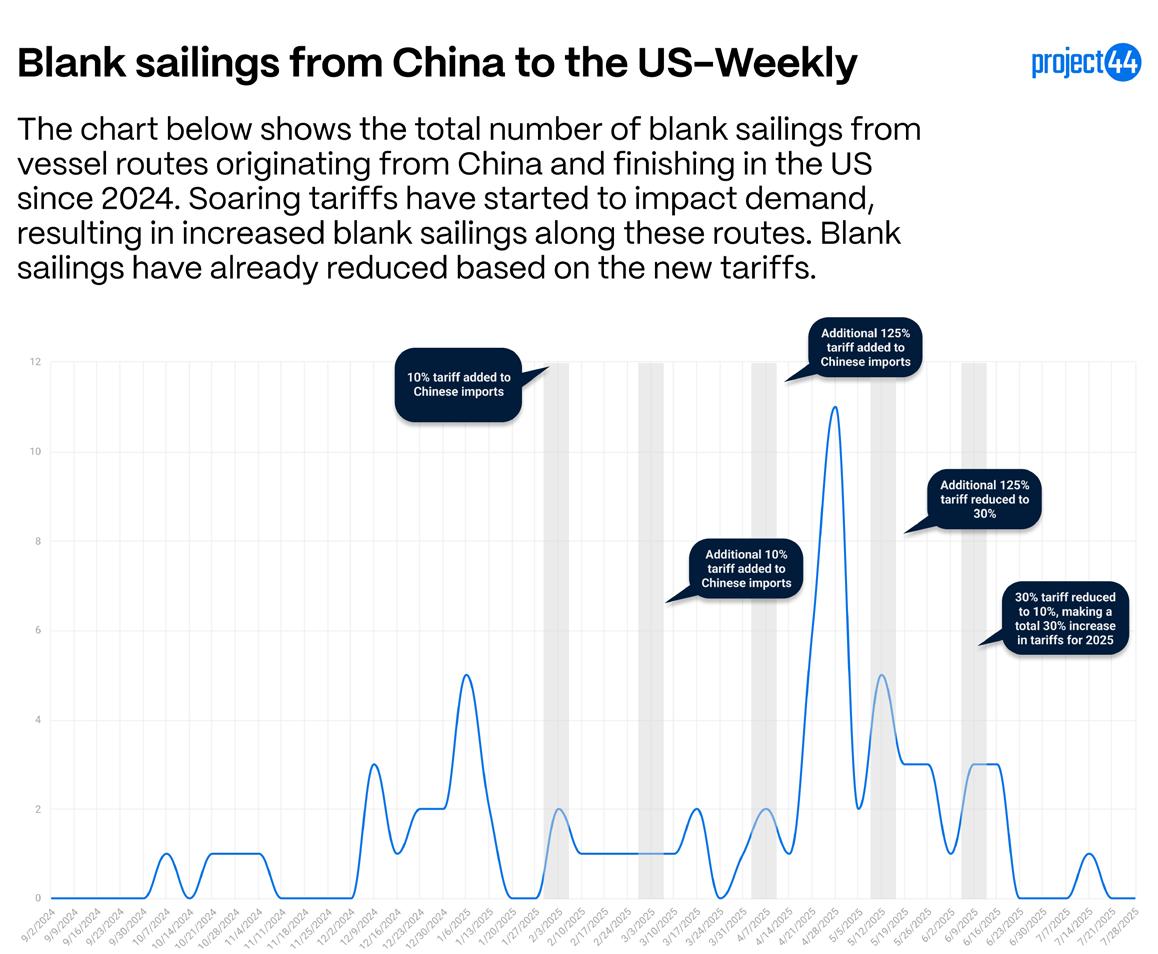
In what ways have US tariffs reshaped port activity in major hubs such as Los Angeles, Long Beach, and Shanghai?
In January, Shanghai processed a record 5 million TEU, as companies accelerated inventory shipments in anticipation of tariffrelated uncertainty. Following this surge, the implementation of tariffs led to a significant slowdown in exports to the US.
On some days, no outbound cargo vessels from Shanghai were even destined for the US.
With tariffs now reduced for at least 90 days, there has been a marked resurgence in export volumes from Shanghai to the US.
The Ports of Los Angeles and Long Beach have experienced the downstream effects of these shifts.
High volumes continued through April, followed by a sharp 35 per cent decline in imports. Currently, both ports are handling reduced volumes, though this is expected to rebound as new vessels from China begin arriving in the coming weeks.
How are shipping companies adapting their strategies in 2025 to address tariff-driven shifts in demand between the US and China?
Many companies are adopting a “wait and see” approach before committing to significant investments in new manufacturing facilities. The current administration’s tariff policies have fluctuated frequently, and with President Trump ineligible for re-election after this term, the
long-term stability of these trade measures remains uncertain.
Firms are understandably cautious about investing heavily in overseas operations or domestic manufacturing when the entire trade landscape could shift with a single executive order or a change in administration.
What impact have US tariffs had on China’s use of its Maritime Silk Road and broader Belt and Road maritime investments in 2025?
Reports suggest that ongoing trade uncertainty has so far driven increased investment and strategic partnerships from China under the Belt and Road Initiative (BRI). However, the project faces potential challenges, including rising material costs due to tariffs and delays in sourcing construction inputs if trade tensions escalate further.
There is also a risk that participating countries may reassess their involvement should US-China tensions continue to intensify. If global trade dynamics
shift significantly, the long-term benefits of BRI infrastructure projects may no longer justify the associated upgrade costs.
To what extent are tariffs in 2025 encouraging US importers to explore alternative maritime supply chains outside of China, such as through Vietnam, India, or Mexico’s Pacific ports?
Since the introduction of tariffs by the first Trump administration in 2018 and the disruptions caused by COVID-19 lockdowns, companies have been actively exploring supply chain diversification, and this trend is likely to continue. Strategies such as routing goods through Mexico or Canada and using rail or truck transport into the US can help mitigate tariff exposure. However, to qualify for such exemptions, products must undergo “substantial transformation”—a requirement that varies by product category. Simply passing goods through a third country is not sufficient, and navigating these rules remains complex.
What role are regional trade agreements, such as RCEP or USMCA, playing in shaping maritime trade flows amid ongoing US–China tariff tensions?
The Regional Comprehensive Economic Partnership (RCEP) could facilitate a shift in manufacturing away from hightariff regions like China if the proposed Liberation Day tariffs take effect. For instance, a Chinese company currently facing a combined 50 per cent tariff when exporting directly to the US (30 per cent from Liberation Day measures and 20 per cent from other initiatives) might reduce exposure by partially producing goods in China, then completing final assembly in a lower-tariff country such as the Philippines (17 per cent) before exporting to the US. There has been a marked increase in nearshoring in recent years, particularly from the US to Mexico—a trend accelerated by COVID-19-related disruptions. The US-Mexico-Canada Agreement

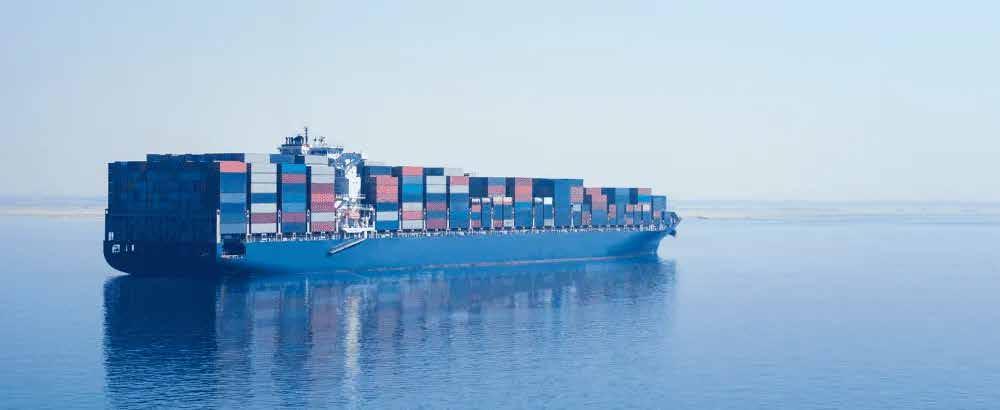
(USMCA) aims to reduce the risks of long-distance sourcing from countries such as China or Vietnam, while also enabling greater use of land-based transport (rail and truck) over more volatile ocean and air freight routes. While companies that have already shifted operations to Mexico are unlikely to reverse course entirely, rising trade tensions and the possibility of new tariffs on Canadian and Mexican goods may prompt firms to reassess the scale of their investments. Businesses still evaluating supply chain strategies are also expected to broaden their geographic considerations beyond Mexico.
How are global port operators and terminal investors adjusting their capital deployment strategies in response to US–China trade uncertainty?
A notable example of how USChina tensions are affecting investments is BlackRock’s acquisition of all shares in Hong
Kong-based CK Hutchison Holdings, which controls 43 ports across 23 countries. This portfolio includes the strategically important ports of Balboa and Cristobal at either end of the Panama Canal. The transaction reflects broader US efforts to reduce Chinese influence over critical supply chain hubs.
To what extent are environmental regulations and decarbonisation goals influencing how carriers respond to the tariff-driven reconfiguration of trade routes?
Rising tariffs raise concerns that sustainability initiatives may be deprioritised as companies seek cost-effective manufacturing and supply chain solutions. Efforts to reduce expenses could lead to sourcing from cheaper suppliers, often with lower environmental standards and less advanced sustainability practices.
Conversely, some companies may adopt strategies that reduce environmental impact, such as
nearshoring to cut transportation distances and shifting from air to ocean freight, the latter being less costly and more sustainable. Adjusting supply chains to accommodate longer transit times could further support these sustainability gains.
ABOUT THE AUTHOR:
Jenna Slagle is a Senior Data Analyst at project44. With a Bachelor's degree focused in Logistics, Materials, and Supply Chain Management from the University of Ohio, she leads the collection, analysis and visualisation of project44's proprietary data to provide insights on trends and changes happening in the industry.
ABOUT THE COMPANY:
project44 is the Decision Intelligence Platform for the modern supply chain. Its valuedriven AI transforms fragmented logistics management into unified intelligence, bringing certainty to global supply chain operations.




Syed Rakin Rahman, Reporter, Port Technology International, interviewing Osmo Lahtinen, Managing Director, OVL Container
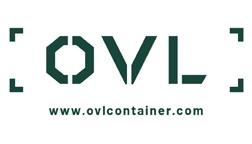
In this exclusive interview, PTI’s Reporter Syed Rakin Rahman speaks with Osmo Lahtinen, Managing Director of container leasing specialists OVL Container, to explore the growing role of one-way container leasing in modern logistics. Lahtinen offers insights into how this flexible model is helping shippers navigate global supply chain challenges, geopolitical disruptions, and rising costs—all while embracing digital innovation and AI-driven solutions.
Could you begin by explaining what one-way container leasing entails within the maritime sector and how it typically operates?
In a nutshell, one-way leasing refers to the leasing of a container from point A to point B. Typically, shippers or consignees are primarily focused on moving cargo from one location to another, with limited concern for container ownership or availability.
One-way leasing becomes particularly relevant when additional time is required to load or offload cargo. Steamship lines generally offer a limited number of free days for container use. For instance, when an empty container is picked up as part of a standard shipping line service, it must be returned within a specific timeframe—otherwise, detention fees apply, which can be considerable.
Leasing a container from a third party such as OVL allows customers greater freedom regarding timing. Our daily fees are significantly lower than those
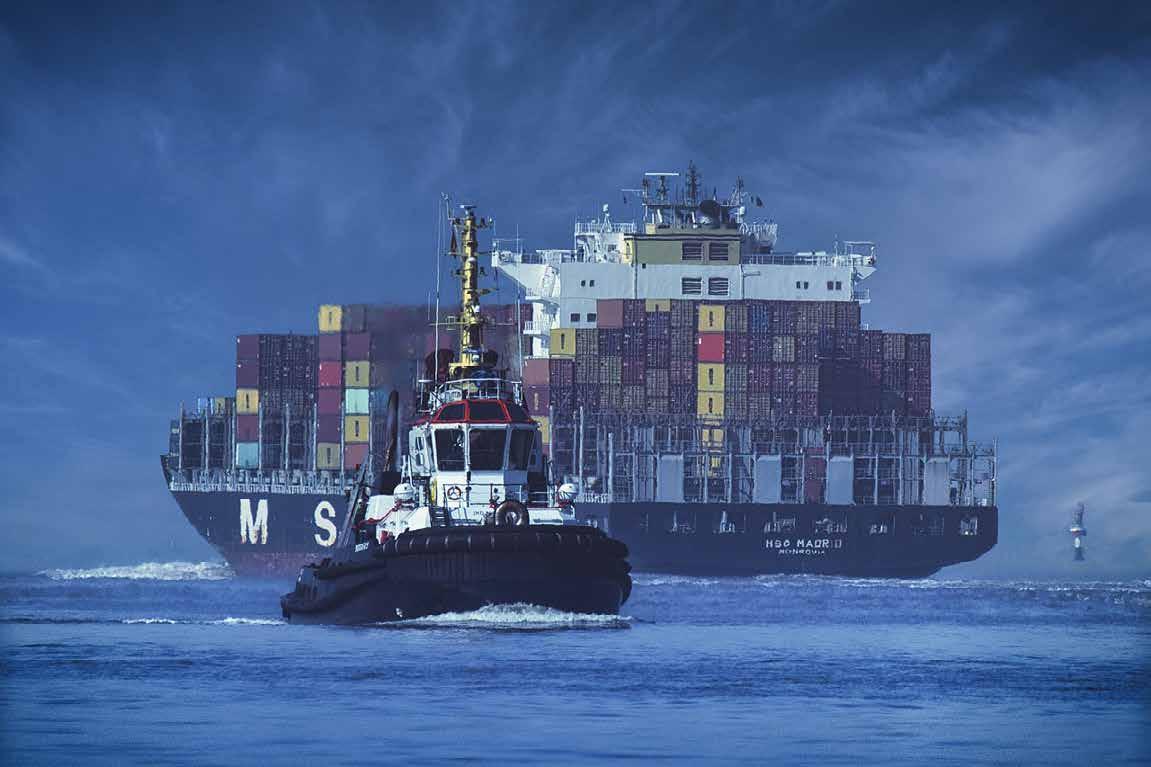
charged by many shipping lines— for example, where a shipping line might charge $100 per day, our rate is closer to $5. The operational process remains the same: containers are picked up and returned to the same depots.
The main distinction lies in the separation of the container from the ocean freight booking. The key advantage of this model is increased flexibility, enabling extended use of containers— whether for one month, two months, or even a year—without penalty. This offers the operational breathing space that many customers require.
In what ways does one-way container leasing address some of today’s most pressing global supply chain challenges?
Flexibility is a critical factor. Oneway leasing eliminates penalties associated with delays in loading
or unloading due to customs issues, construction setbacks, or other unforeseen disruptions. It simplifies operations and reduces the number of variables that logistics providers need to manage. In addition, certain destinations— particularly inland locations such as those in Central Asia or Ukraine—are not directly served by major shipping lines. For example, in a traditional scenario, shipping from Houston to Kyiv might involve sending a container to Rotterdam, unloading it, and then forwarding it overland. In contrast, our model enables a container to be picked up in Houston and returned directly to Kyiv, thereby avoiding transloading and reducing transit complexity.
Another advantage involves cost savings. In some trade lanes, such as those between Asia and North America, customers may receive discounts from shipping lines when using their own containers.
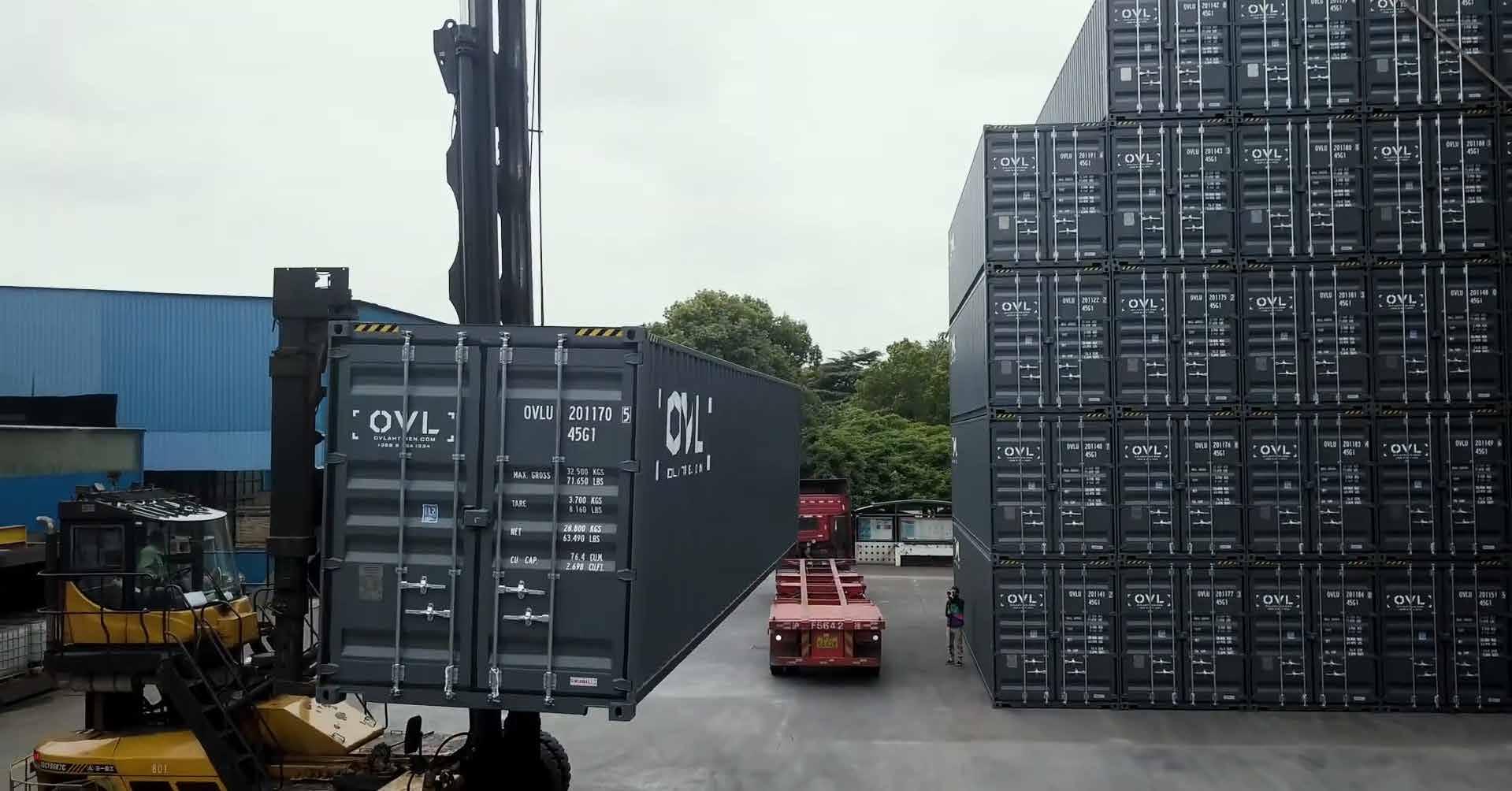
For example, with ocean freight at $5,000, a 20 per cent discount may be offered for using a third-party container. If the leasing cost is $500, this results in significant savings along with enhanced flexibility.
How have recent geopolitical developments—such as the Red Sea crisis and the introduction of new tariffs—influenced your operational approach and your clients’ routing decisions?
OVL does not transport cargo directly. Our clients are freight forwarders, NVOCCs, and other neutral logistics providers who determine routing. However, we do observe how these disruptions are affecting their decisions and strategies.
The Red Sea crisis, for instance, has increased interest in rail freight between Europe and China. Blank sailings—cancelled voyages—have also disrupted planning across many regions.
Tariff changes have led to notable shifts in demand. In the first quarter of the year, bookings to the US were minimal, but following the announcement of new tariffs between China and the US, demand increased sharply. This trend helped reduce excess inventory in US warehouses, and we are now seeing restocking activity, with strong demand
expected to continue despite broader market challenges.
Given OVL’s position as a neutral leasing provider, how does this allow you to remain agile in the face of global logistics disruptions, compared to more traditional market players?
As a neutral provider, OVL is not tied to specific carriers or routes. This independence enables us to respond rapidly to market changes. If disruption occurs in one area, operations can be shifted to another region or route without significant structural changes. This adaptability is a key strength of the one-way leasing model.
With supply chain disruptions becoming more prolonged and costly, how does OVL strike a balance between operational efficiency and long-term resilience for your customers?
The core of our approach is container flexibility. When unexpected delays arise, customers benefit from the ability to retain containers beyond standard free-time limits without facing excessive costs. This reduces pressure on scheduling and provides resilience against uncertainty— something increasingly important in today's supply chains.
How is OVL leveraging artificial intelligence to enhance visibility, forecasting, and resilience across your container leasing operations?
Our operations are built on proprietary software we began developing in 2013. This system supports the management of tens of thousands of container movements annually with a lean global team of just 15 people— an efficiency made possible by digitalisation.
Recently, we expanded our capabilities by hiring a dedicated AI developer. One of the first applications has been the automation of container tracking, with every depot entry and exit logged automatically. AI is also used to verify internal data against external sources, ensuring consistency and accuracy. The goal is to delegate repetitive or time-sensitive tasks to technology, allowing staff to focus on service and exception management. Additionally, AI now assists with container routing optimisation. With operations spanning over 200 global locations and tens of thousands of route permutations, AI analyses historical data to forecast demand and container positioning needs. This helps reduce idle time and improve planning.



Kevin Krukis, Managing Director - German Operations, FourKites
Supply chain disruptions used to be occasional headaches—a port strike here, a natural disaster there. Now, companies operate in what feels like permanent crisis mode.
Meanwhile, supply chain expenses are diverging from traditional trajectories. Research by Kearney indicates that global costs could climb as much as 6.6 per cent beyond inflationary pressures, with tariffs no longer the sole culprit behind this surge.
At the same time, tariff uncertainty is pushing supply chain leaders to reduce planning horizons, increase inventory carrying costs, and delay strategic investments, according to the CEO of the Association for Supply Chain Management.
As a result, supply chains are breaking down. In the first quarter of 2025, 89 per cent of companies made strategic supply chain shifts in response to ongoing uncertainties, according to West Monroe. These were not small tweaks—more than half changed their transportation mix between air, rail, trucking, and sea freight. Another 56 per cent overhauled their production schedules.
Companies wouldn't be making such massive operational changes if their original plans were working. External events are repeatedly invalidating carefully crafted strategies, leaving teams in firefighting mode instead of executing smoothly.
International shipping amplifies these challenges. When goods cross borders, they pass through multiple carriers, customs authorities, and regulatory jurisdictions. Each handoff creates a potential visibility gap. A container
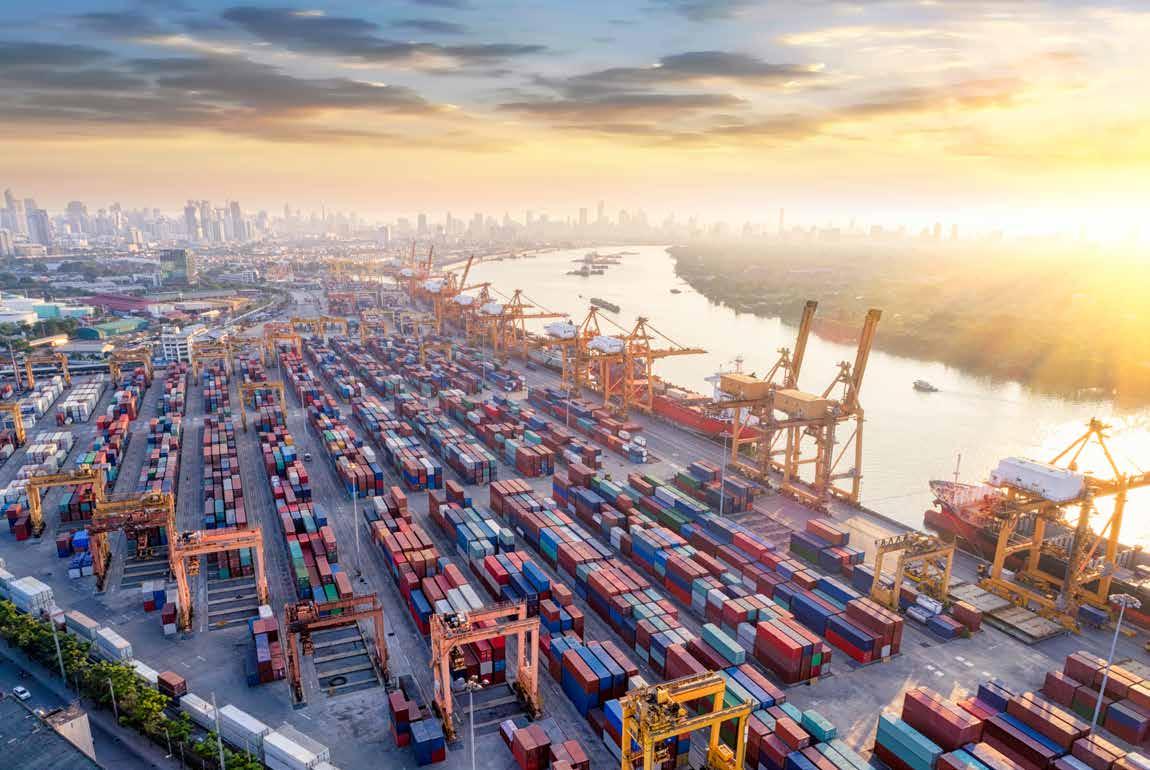
might clear customs in Long Beach but sit in a rail yard for days, while the importer has no idea where it stands in the queue. Ocean freight is transferred to trucking companies using different tracking systems. Information gets lost in translation between systems that don't communicate with each other.
Yet when plans inevitably fall apart, the right technology investments can help organisations adapt faster than the disruption can spread. The key lies in building two capabilities: network-wide insights that pinpoint vulnerabilities before they escalate, and intelligent automation that handles operational complexity that bogs down teams. Get those right, and your supply chain becomes less fragile.
Many companies obsess over risks they can easily measure while missing bigger systemic
vulnerabilities. They diversify suppliers geographically but still rely on the same shipping routes. They track supplier concentration but ignore port concentration. Some invest heavily in demand forecasting while still managing supplier relationships through spreadsheets and email chains.
What they often lack is digital models of entire order networks that update in real time, showing exactly which customers and production lines could be affected by potential delays. This networklevel insight reveals hidden vulnerabilities that single-point solutions simply miss.
Advanced systems can also improve delivery performance by integrating existing enterprise systems and maintaining live tracking across all transportation modes. They accurately predict delivery times and automatically detect potential disruptions before they impact customer commitments.
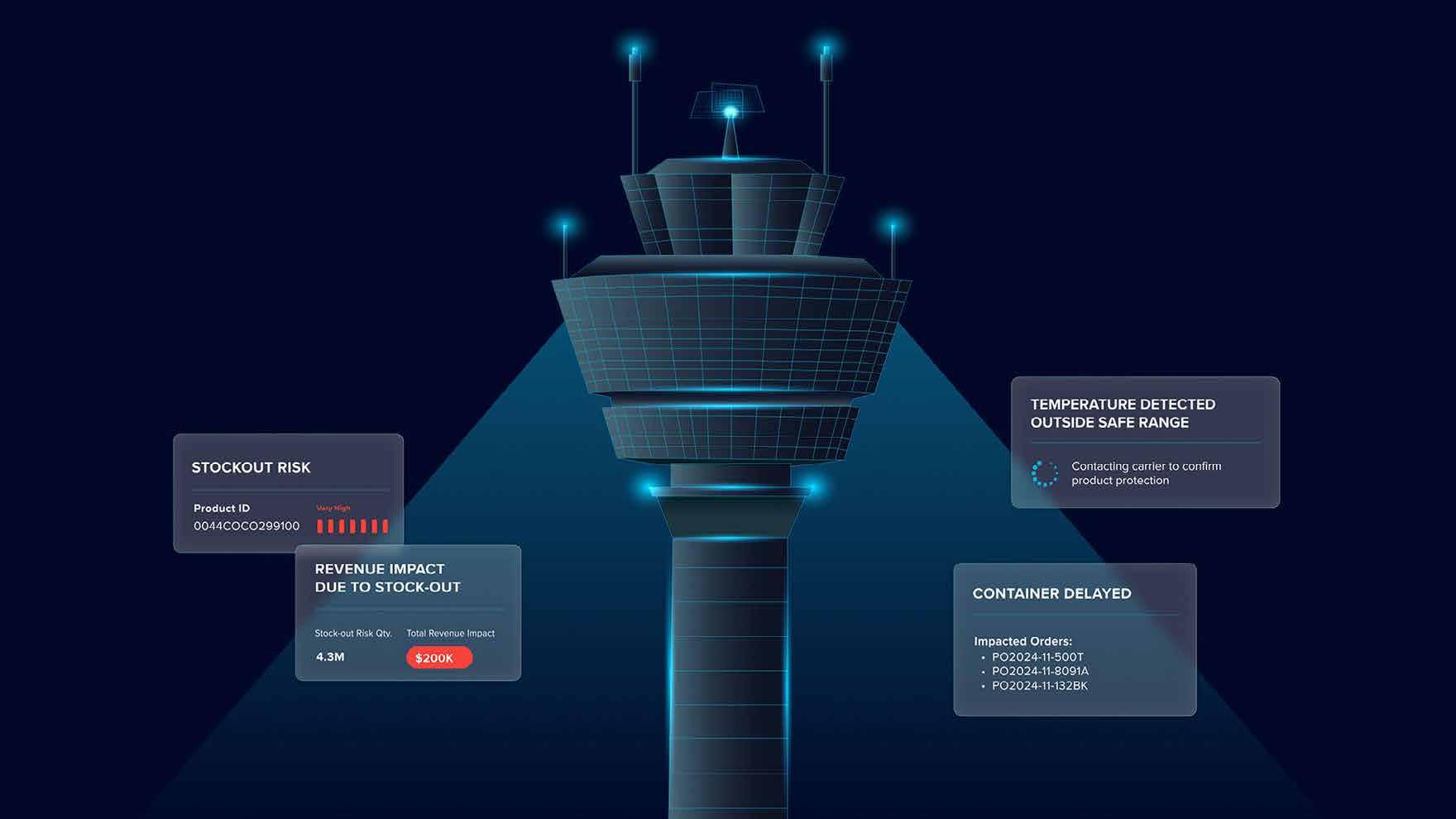
Instead of preparing for one thing to go wrong, organisations should prepare for their primary supplier to fail during a port strike while currency volatility spikes during peak season. Everything happens at once in the real world, and the most resilient supply chains prepare accordingly. But if you can’t see it and model it in real-time, then you can’t react to it.
In addition to knowing the best course of action to take when disruptions hit, supply chain leaders must eliminate the operational friction that compounds every disruption. With the help of AI, businesses can identify how disruptions will impact their operations before they manifest, not just when they're already causing problems. By analysing patterns across millions of daily shipments, supplier behaviour data, and production schedules, these systems can predict which orders and production lines are at risk long before traditional tracking systems would detect an issue.
Detention and demurrage charges become manageable through proactive coordination rather than reactive scrambling. AI-
powered supply chain technology platforms can spot port congestion patterns, coordinate pickup schedules based on real-time capacity, and automatically arrange alternative pickup windows before charges accumulate. With truckload spot rates up 9.1 per cent year-over-year and contract rates turning inflationary for the first time since late 2022—according to RXO—this predictive approach can save thousands per shipment.
Transportation mode optimisation takes this intelligence further. AI systems that integrate customs clearance data with inland transportation capacity can autonomously switch between transport modes to avoid delays and prevent expensive expedited shipping. Rather than reacting to bottlenecks, these platforms identify network constraints and orchestrate alternative options before the problem intensifies.
However, inventory carrying costs might offer the biggest opportunity. According to the Logistics Manager's Index, inventory costs reached their highest levels since October 2022 in May 2025. Here, the shift from reactive management to predictive orchestration becomes crucial.
AI agents—what we call "digital workers"—operate 24/7 to handle complex supply chain
tasks that once required constant human intervention. Unlike simple automation scripts, these autonomous agents continuously make decisions, manage exceptions, and orchestrate operations across multiple stakeholders.
For example, instead of teams manually chasing updates buried in emails, documents, and chat messages, digital workers continuously analyse supplier communications, production schedules, and shipment patterns to identify risks weeks ahead. They automatically manage carrier communications, follow up on delays, and maintain live views of entire supply networks with predictive analytics that project potential delays based on network conditions.
Consider how time-consuming dock scheduling at major distribution centres can be. Instead, AI systems automatically handle appointments based on real-time shipment ETAs, facility capacity, and dock availability. In addition to basic scheduling, digital workers can coordinate directly with carriers around the clock, automatically adjusting delivery appointments when conditions change and rebalancing workloads to prevent bottlenecks. Teams of planners who used to make dozens of phone calls can focus on strategic work instead.
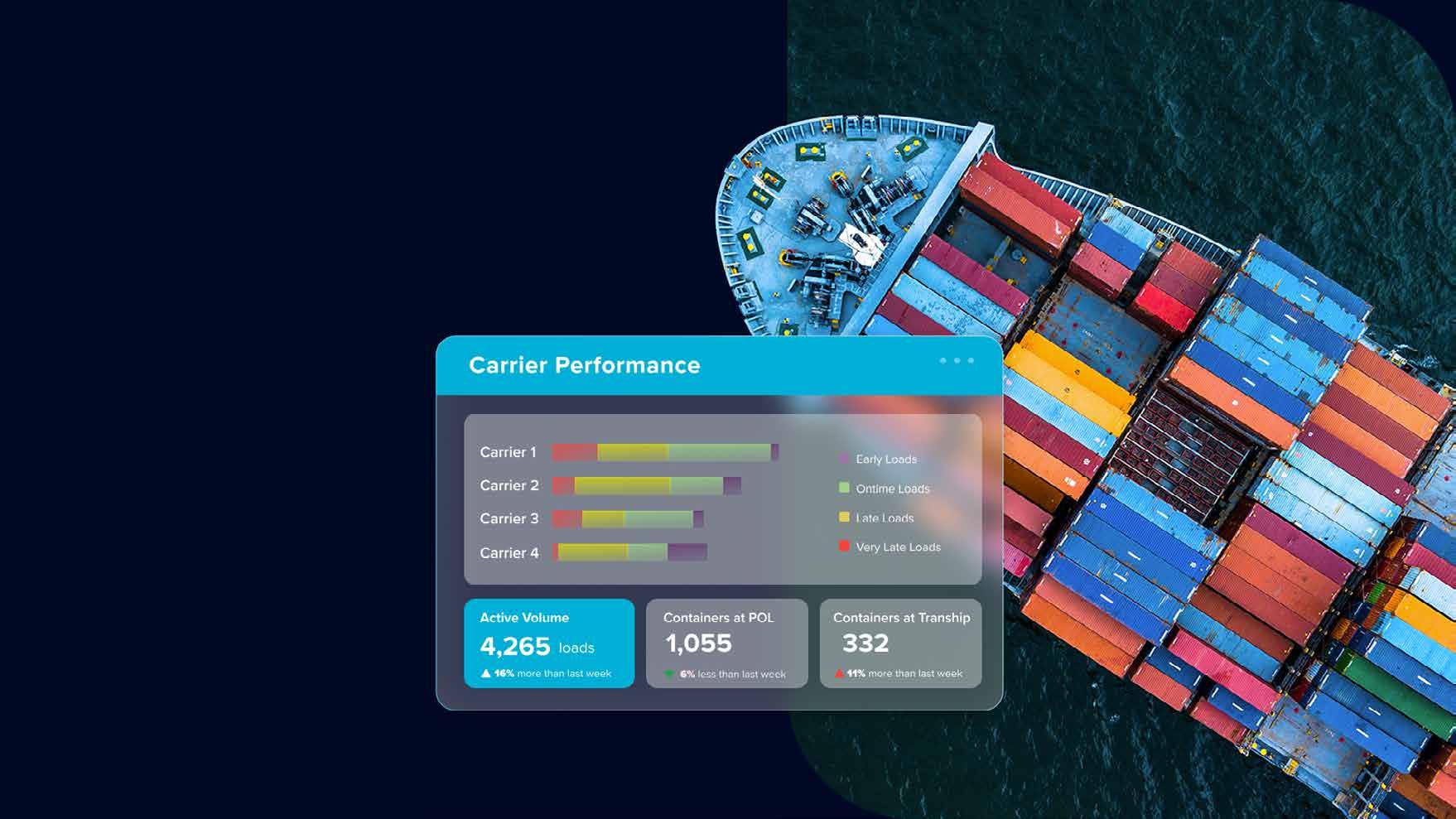
Rather than trying to predict the unpredictable, supply chain leaders must build operations that can handle whatever comes next. Look for areas where your teams spend hours coordinating work that technology could automate— whether it's dock appointments, supplier communications, or transportation booking. These friction points represent opportunities to deploy intelligent systems that adapt faster than any human team could manage manually.
You don't need to overhaul everything at once. Begin by identifying where most operational friction occurs. Map out where manual processes create bottlenecks, especially during disruptions. Look for repetitive tasks where human input adds little value—document management, routine communications, scheduling coordination.
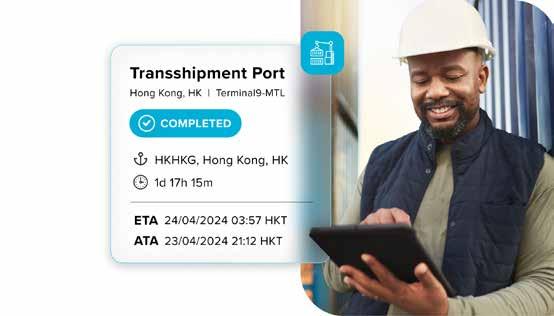
Pilot programmes focusing on intelligent appointment scheduling or automated supplier collaboration often deliver measurable results within weeks. AI-powered detention management platforms that coordinate 24/7 with carriers and optimise dock capacity typically demonstrate ROI quickly. Use these early wins to build support for broader digital worker deployments. The key is investing in platforms that orchestrate across your entire—not just isolated processes. Look for systems that can integrate with existing enterprise infrastructure while providing the real-time coordination capabilities that manual processes can't match. Most importantly, invest in systems that prevent rather than just track. Even the best-laid plans will fall apart. Supply chains that can identify problems weeks in advance and pivot intelligently when reality hits will have the best chance of thriving despite constant uncertainty.
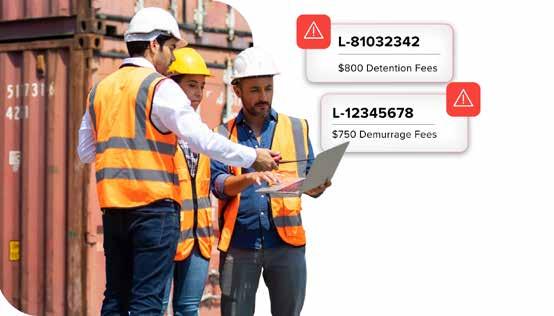
Kevin, Managing Director for FourKites' German operations, boasts 10-plus years in supply chain visibility. He's been crucial in steering FourKites’ operational strategy and cultivating global customer relationships, positioning him as a leader in driving company growth and worldwide customer success.
Supply chain visibility platform
FourKites extends visibility beyond transportation into yards, warehouses, stores and beyond. Tracking over 3 million shipments daily across road, rail, ocean, air, parcel and last mile, and reaching more than 200 countries and territories, FourKites combines realtime data and machine learning to help companies digitise their endto-end supply chains. Over 1,200 top global brands trust FourKites to create more agile, efficient and sustainable supply chains.
www.fourkites.com
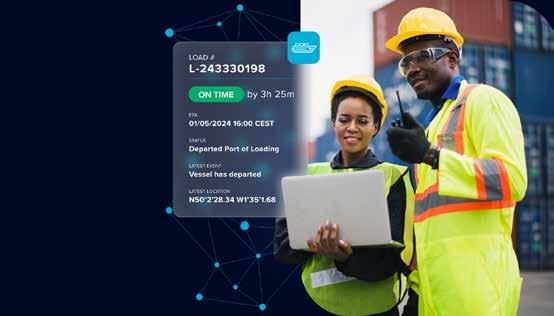
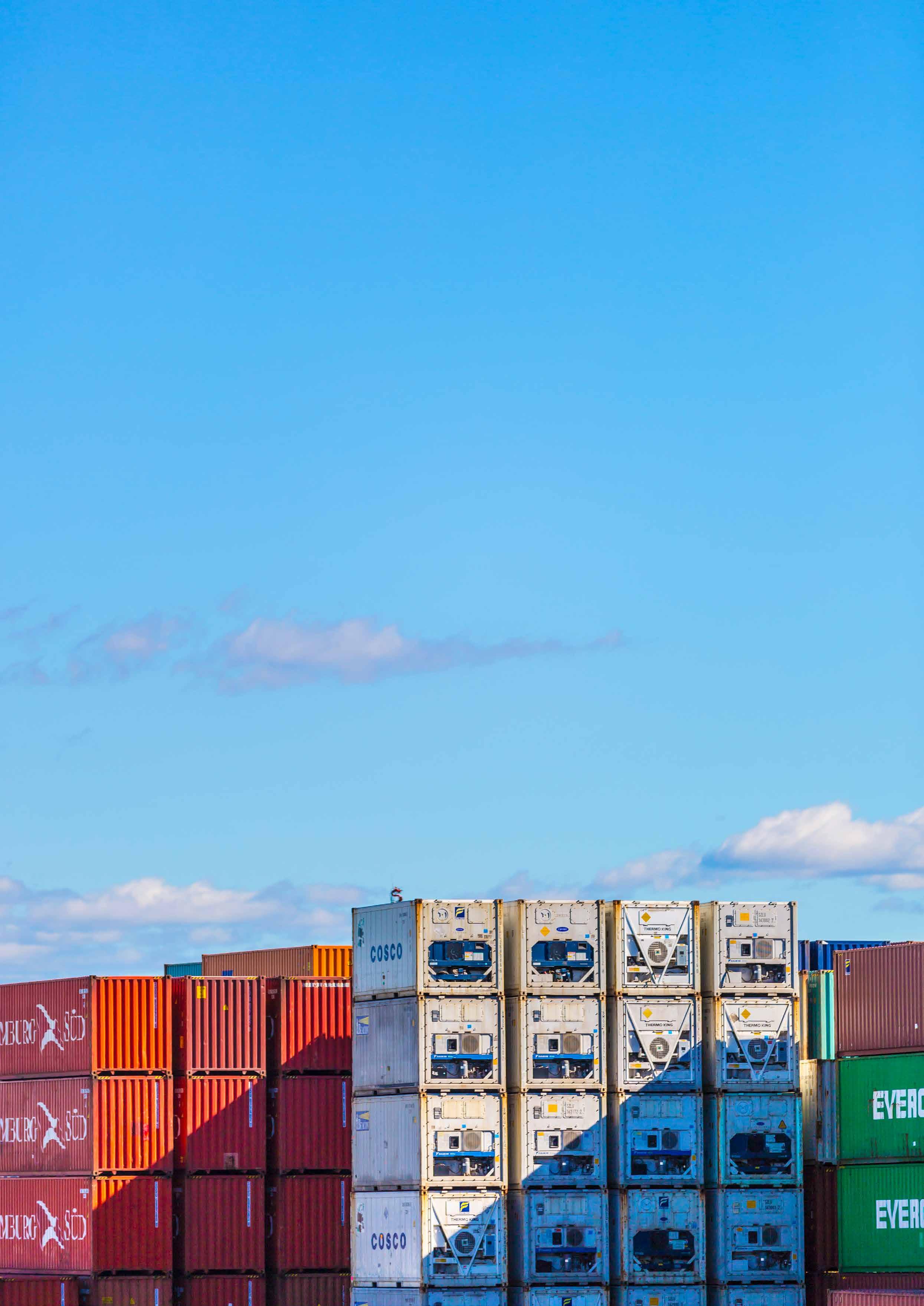

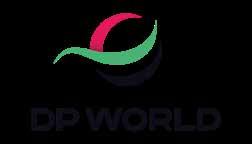
Mark Rosenberg, Chief Commercial Officer (Ports and Terminals), DP World Europe
It’s too simplistic to say supply chains were ever predictable. But it’s fair to say the past few years have added a deeper shade of unpredictability to the global network that keeps trade flowing.
In Europe, supply chains have had nowhere to hide from ongoing shocks. If you were to draw a line marking moments of disruption over the past few years, you might run out of ink.
Where the line will be drawn next is uncertain. Climate events, fragmentation, and geopolitical issues have become less background noise and more central characters in modern supply chains. What can be said is that disruption, in some form or another, will always be present.
That’s not a dramatic forecast; it’s the operating environment. And while the industry has adjusted its language (“resilience” is now as common in boardrooms as “margin”), the response hasn’t always kept pace with the rhetoric.
Too often, disruption prompts us to look back: to analyse what failed, what was delayed, what was rerouted. But the real opportunity lies ahead. By combining human insight with the extraordinary innovation already at our fingertips, we can design supply chains that interpret, anticipate, and adapt — turning disruption into competitive advantage.
You don’t need me to tell you that digitalisation is the foundation of the modern supply chain. But we do need to move beyond isolated
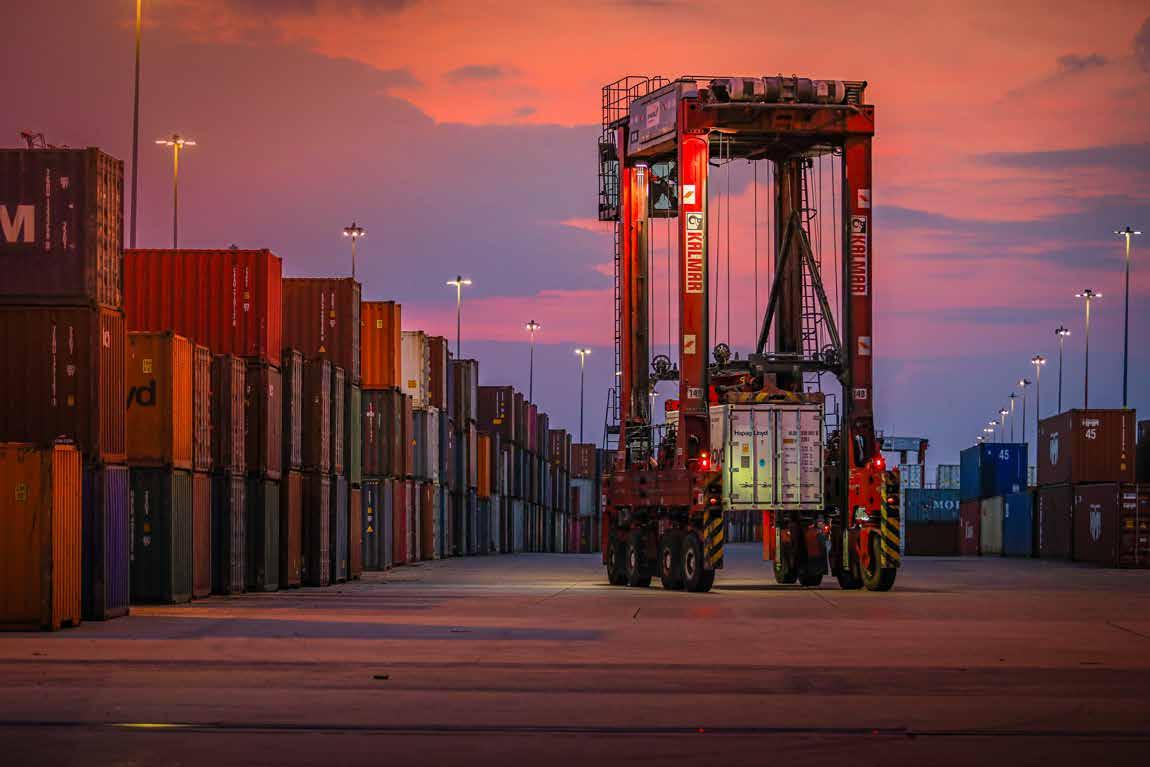
tools and reframe digitalisation as something more integrated and systematic.
We might use the term “cognitive infrastructure” to describe this model. This involves digital systems, automated processes, and data-led operations working together in the moment. It means predictive and responsive performance across the full corridor, not just a dashboard or terminal in isolation.
This is supported by broader expectations. According to the 2025 Trade in Transition report, led by Economist Impact and supported by DP World, 41 per cent of companies see new technologies that increase the efficiency and visibility of supply chains as their top reason for optimism this year.
Their optimism isn’t misplaced; the performance gap between connected and disconnected infrastructure will define competitive
advantage over the next decade. But transforming expectations of digitalisation into everyday reality means investing in transformation at every point along the supply chain.
Across DP World’s European network, this shift is already underway:
• At Southampton and Limassol, our terminal operating system (TOS), CARGOES TOS+, creates a real-time digital twin of operations, tracking yard status, vessel load plans, truck movements, and crane performance. This data feeds directly into dynamic scheduling systems, boosting berth productivity and reducing turnaround times.
• In Türkiye, the Digital Surveyor App at DP World Yarimca
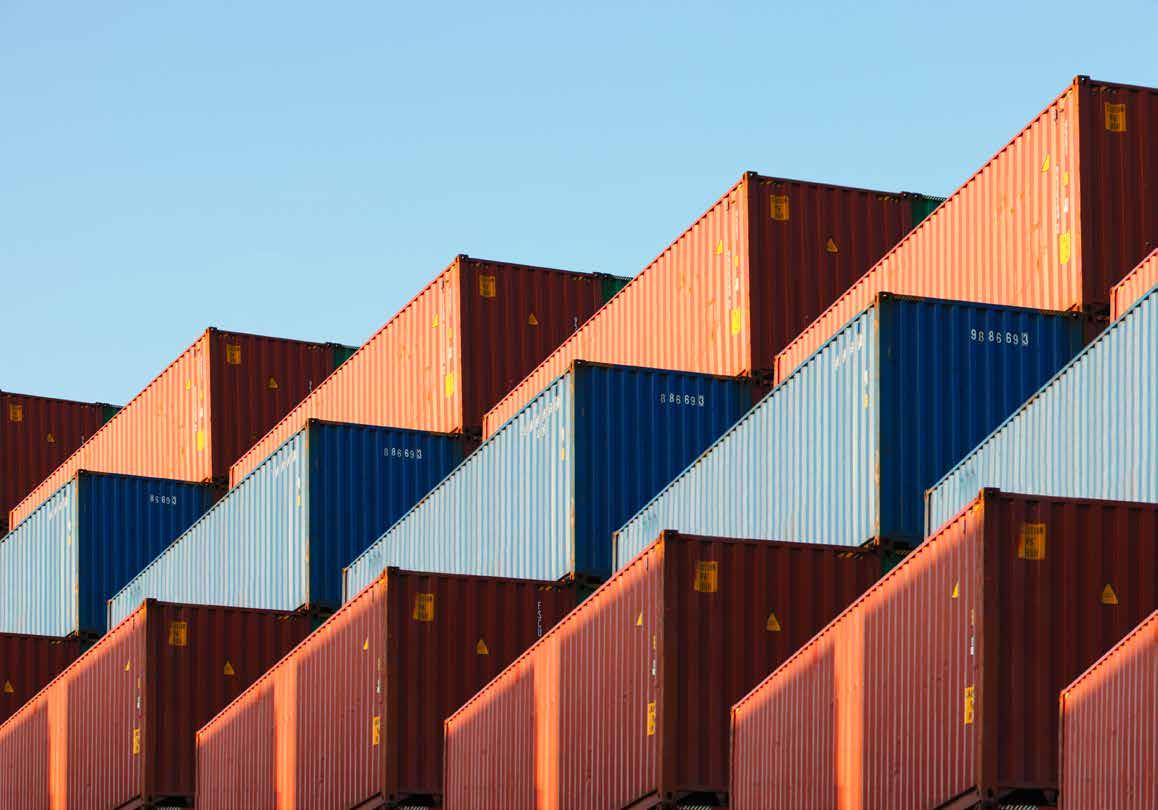
enables remote cargo inspections, live condition updates, and digital release instructions—cutting on-site traffic, improving safety, and speeding up collection. Yarimca also operates Türkiye’s first remotely controlled electric quay cranes, which have halved lost-time incidents and significantly reduced emissions.
• In Antwerp, the Certified Pickup (CPu) system—developed with NxtPort and the Port of Antwerp-Bruges—uses biometric authentication to replace PIN codes, enhancing security and reducing congestion. Around 2,000 companies are already on board, with expansion into barge and rail underway. Multimodal visibility is unified through CARGOES Flow, while the Digital Freight Alliance connects more than 45,000 forwarders in a single digital space for quoting, booking, and documentation. Meanwhile, at the customer interface, tools like SeaRates empower shippers to assess delays and dynamically replan routes.
What ties these innovations together is a shared design principle: intelligence lives across the network, not just inside individual assets. With platforms, people, and planning moving in unison, visibility becomes action. Action becomes advantage.
One of the biggest barriers to cognitive infrastructure is structural fragmentation—the disconnect between platforms, systems, and standards across borders and transport modes. In Europe, resilience planning still depends on schedulers, customs agents, and planners navigating data silos, duplicated paperwork, and incompatible handovers. When disruption strikes, it’s institutional memory and manual workarounds that keep things moving.
The inefficiencies are measurable. According to the OECD’s 2025 Trade Facilitation Indicators , fragmented and poorly coordinated border processes inflate trade costs, particularly where agency cooperation is weak. Globally, logistics costs exceed 10 per cent of GDP ; in the US alone, they hit 8.8 per cent in 2024. The World Bank’s 2025 Trade Watch report adds that most avoidable delays in global trade occur at points of transition—between ports and customs, or customs and domestic logistics. But when systems connect across agencies, borders, and transport modes, the impact is transformative. In the Dominican Republic, the rollout of our digital clearance platform, CARGOES Customs, reduced unnecessary inspections by 80 per cent and increased public revenue by more
than $50 million in its first year. This is clear evidence of what interoperable, platform-based systems can deliver.
According to the UN, 70 per cent of governments now participate in digital trade facilitation frameworks, mostly prioritising paperless customs. This reflects growing international momentum behind aligned, digital-first systems. Regional models show the potential at scale. The ASEAN Single Window facilitates seamless customs declarations across ten countries, while the World Logistics Passport—connecting 45 countries and over 250 partners—has increased trade volumes by up to 10 per cent annually by streamlining administrative processes. All of these systems share a simple principle: interoperability at the system level reduces cost and delay at the operational level. The task now is to embed that logic into Europe’s own trade corridors. This requires institutional alignment. Global agreements show what’s possible. For example, full implementation of the World Trade Organization (WTO)’s Trade Facilitation Agreement could cut global trade costs by 14.3 per cent and unlock $1 trillion in value annually. Countries aligned with the Revised Kyoto Convention have slashed import/export times by up to 64 per cent . And UN research shows that trade between countries with interoperable single window systems grows by 37 per cent, driven by fewer forms, fewer errors, and faster clearance.
To build seamless, scalable infrastructure, common standards for customs, emissions tracking, data formats, and routing are essential. But setting the pace requires leadership, and Europe is well-positioned to lead by example.
To do so, three elements are essential:
Standardisation: Industrywide efforts, such as those driven by the Terminal Industry Committee (TIC4.0), are accelerating the development of machine-to-machine data formats and unified communication protocols. These standards are essential to help ports, vessels, terminals, and logistics platforms coordinate decisions across systems and geographies.
• Policy enablement: The EU Port Strategy recognises the need to bolster cybersecurity, labour training, and regulatory alignment as ports become more digital. Without consistent governance across borders, digital solutions will remain stuck in national silos.
• Skills and adoption: Technology is only as effective as the people using it. Futureproofing supply chains requires investing in training, process redesign, and human–machine interfaces that support frontline decision-making, particularly as automation and AI become standard across terminals.
Without a shared governance layer, digital systems may function locally, but they won’t scale across the corridors where European trade happens.
To summarise in a simple call to action: to build resilience through digitalisation into Europe’s trade corridors, both governments and the private sector must act decisively. That means aligning customs, port, and logistics data formats to enable real-time interoperability across borders. It means accelerating the rollout of proven platforms across entire trade corridors.
It also requires a shift in mindset: digital systems must no longer be treated as bolt-ons, but as the central nervous system of modern trade. And critically, the people operating these systems must be equipped with the digital fluency to use them effectively, from planning and control towers to terminal operations.
The case for cognitive infrastructure has moved beyond the theory stage. Europe already has the assets, the tools, and the policy momentum. What’s missing is consistency and execution. For when systems connect, trade flows; when they don’t, friction returns. And in a climate of disruption—where speed, resilience, and sustainability define competitiveness—Europe cannot afford to fall behind.
Mark Rosenberg joined DP World in 2020 as Commercial and Marketing Director for the Europe region,

bringing extensive leadership experience from Maersk, where he worked for over two decades in senior leadership roles in Sweden, UAE and the Netherlands.
As Chief Commercial Officer (Ports and Terminals), Mark is responsible for driving Europe’s commercial and strategic growth, with a focus on expanding the role of DP World’s integrated services across logistics, terminals, and trade enablement. He leads efforts to anticipate and respond to evolving regional dynamics, shaping the future of resilient and adaptive supply chains. Through close alignment of operational and commercial functions, Mark ensures the delivery of efficient, high-value solutions that strengthen client satisfaction and generate long-term value for partners and customers.
DP World is reshaping the future of global trade to improve lives everywhere. Operating across six continents with a team of over 115,600 employees, we combine global infrastructure and local expertise to deliver seamless supply chain solutions.
From Ports and Terminals to Marine Services, Logistics and Technology, we leverage innovation to create better ways to trade, minimising disruptions from the factory floor to the customer’s door. WE MAKE TRADE FLOW




As container terminals face increasing pressure to optimise efficiency and reduce bottlenecks, tailored AI solutions are emerging as a key tool in streamlining terminal operations. By adapting to the specific workflows, traffic patterns, and infrastructure of each terminal, these intelligent systems offer targeted improvements that off-the-shelf software often can't deliver.
Building on the momentum of our sold-out CTAC Europe event in April, Dom Magli, News Editor at Port Technology International, speaks with Rafael Velasquez, Director of Optimisation & Integration at INFORM Terminal & Distribution Center Logistics, about how INFORM is applying tailored AI to drive operational resilience in complex terminal environments.
How does INFORM use tailored software, AI, and data-driven strategies to drive digital transformation?
At INFORM, we combine advanced mathematics, AI, and data-driven strategies to support intelligent decisionmaking, especially in areas where complexity, timing, and coordination demand more than manual planning alone. We want to enhance human expertise with tools that can handle the data volume and operational variables of today’s logistics landscape.
As global freight flows become more dynamic and customer expectations continue to evolve, terminals are under pressure to respond with greater speed and flexibility. That doesn’t mean they're falling behind… yet. But now is the time to take the next step towards, and our mission is to walk that path with terminals, supporting where we are best.
One example of what’s possible is Duisburg Gateway Terminal (DGT) at Duisport, developed with a digital-first mindset. As one of Europe’s early inland hubs designed without the constraints of legacy systems, DGT provides a unique space for innovation. Here, INFORM’s scalable intermodal Terminal Operating System (TOS), already embedded with optimisation capabilities, supports real-time automation of equipment dispatching, stacking strategies, and rail/road coordination.
But innovation isn’t limited to new terminals. Our intermodal TOS is also fully operational at well-established sites like Kombiterminal Ludwigshafen (KTL), where it enhances existing operations without the need to start from scratch. There, the same intelligent software has been helping to optimise day-to-day planning for years, proving that digital transformation is just as relevant for longstanding terminals as it is for greenfield projects.
How do INFORM’s offerings differ from other software solution providers, especially in terms of intelligent decision-making and automation?
We know that many terminal operators have systems they’ve invested in for years. We're not here to bulldoze that legacy—we’re here to make it smarter. For terminals that are already working with an existing TOS, we offer a suite of optimisation modules that each target specific operations where critical decisions are made that significantly impact terminal performance. That can concern stacking and yard operations, crane and vehicle management, or railway connections. We’ve seen that leverage points vary greatly from terminal to terminal, which is why we support our customers in identifying what’s holding them back in increasing throughput, improving service quality, or ensuring greater safety for their staff.
The modules work like a highperformance engine upgrade. You keep the structure you trust—we just make everything run more efficiently, more consistently, more transparently, and more intelligently. In short, we fit into your world, not the other way around.
What also sets us apart is that with “decision-making,” we mean the full journey—from problem detection to thorough analysis to automated

resolution. While other providers might stop at dashboards and alerts, we use AI and data-driven algorithms to act on these insights. The magic is that this can happen on the inside, so as a layer on top of your existing IT infrastructure. Our modules integrate seamlessly with the TOS and operate in the background, allowing you to continue working with the interfaces you know. They suggest decisions that can either be executed automatically or reviewed and adjusted by an operator when needed, following our “human-in-the-loop” design.
How can INFORM ensure its solutions are tailored to the unique conditions, challenges, and priorities of each terminal?
No two terminals are the same. Layouts differ. Traffic flows vary. And stakeholder priorities can range from reducing turnaround times to lowering emissions. That’s why our approach always begins with listening, observing the operation closely and understanding the specific context on site.
Since this can usually sound a little vague, I want to include some examples here. When a terminal operator comes to us with persistent yard congestion, the root cause often lies in inefficient vehicle routing—whether it's Straddle Carriers, Terminal Trucks, or AGVs in
semi-automated environments. In such cases, our vehicle optimisation module can help streamline horizontal transport and reduce unnecessary moves.
But sometimes the issue lies in the stacking strategy itself. When containers are repeatedly rehandled, the moving equipment spends more time performing unproductive moves in the yard. This not only reduces operational efficiency but also causes vehicle queues and delays, ultimately disrupting the smooth flow of the transport chain. Here, yard optimisation can make a real difference.
You see, the symptoms might be similar, but the causes often vary. That’s why we work closely with both the terminal operator and their teams who experience these challenges firsthand. Together, we analyse the situation in detail. Simulation has also proven to be a valuable tool, allowing us to test the impact of a specific optimisation module before it’s implemented, making the benefits visible and measurable from the start.
Our systems are also built to be modular, scalable, and highly configurable—because one size never fits all. And that brings us to another important dimension: the level of automation. It’s a hot topic in the industry, and we’re seeing a growing trend, along with some pressure. But automation doesn’t have to be all or nothing.
Take a mid-sized inland terminal, for
example. Advanced automation might not be a pressing need today. In that case, they can start small with our core TOS, or, if one is already in place, a single add-on module targeting a specific bottleneck. A terminal using our yard module to optimise their stacking and capacity today might choose to expand with crane or rail optimisation tomorrow, as their needs evolve.
What role do partnerships and collaborations—such as with terminal operators, tech providers, or research institutions—play in INFORM’s innovation process and product development?
Innovation doesn’t happen in isolation. Some of our most impactful features were born out of close conversations with terminal operators. We’re also realistic. We know we’re not the only players in the game—and that’s a good thing. Integration with other tech providers is critical. If we’re the brain optimising the flow, others might be the eyes and hands handling slot booking, gate automation, or crane positioning. That’s why we focus on collaboration rather than competition.
A great real-world case is our collaboration at DGT as already mentioned in the beginning. Together with CONROO and Künz, we’re coordinating truck

arrivals, crane operations, and real-time terminal events. Knowing truck arrivals in advance allows the terminal to preposition containers, avoid unnecessary rehandling, and even leave containers on incoming trains for direct truck pickup, resulting in fewer unproductive moves and faster turnaround times for external trucks. Geofencing adds another layer of precision by improving the accuracy of truck ETAs, enabling crane jobs to be scheduled proactively so the equipment is ready when the truck arrives.
And beyond the commercial sphere, we actively contribute to the development of the industry itself. INFORM participates in initiatives like the German Research Association for Combined Transport (SGKV), the International Union for Road-Rail Combined Transport (UIRR), the Terminal Industry Committee (TIC4.0) and the Intermodal Association of North America (IANA), driving both technical advancement and standardisation.
In these rounds, all stakeholders come together, and we firmly believe that’s the only way to go forward.
Your solutions are known for enhancing decision-making efficiency within terminal operations. How has INFORM’s suite of solutions evolved over the years, and what measurable results have they delivered in realworld applications?
Problems that used to take weeks to solve just a few years ago can now be
resolved in milliseconds, thanks to major advances in our algorithms and hardware capabilities. What once required manual analysis and extensive coordination is now handled instantly and intelligently, delivering real-time decision support and optimisation directly within live operations.
Our suite of solutions has also grown— from specialised tools like vehicle dispatching to full-scale orchestration platforms covering, for example, the entire horizontal transport chain in terminals.
One striking example of this is our work with HHLA Container Terminal Burchardkai (CTB) in Hamburg. Here, we help orchestrate 66 Automated Stacking Cranes across 22 yard blocks, some working in tandem with more than 100 Straddle Carriers. Straddle Carriers are now gradually being replaced by AGVs, a shift towards automation that we can support with our software solutions. INFORM’s yard, crane, and vehicle optimisation modules are at the heart of this hybrid operation, ensuring that decisions are made quickly, intelligently, and with minimal human intervention.
Specifically, this means optimising job assignments with full visibility into all executable terminal tasks, allowing for smarter planning and faster execution. It also involves pooling jobs—such as vessel loading and unloading—for greater efficiency and potential fleet reduction, while precise scheduling and routing help prevent equipment conflicts and ensure smoother gantry and hoist operations.
Finally, what’s next for automation in the maritime sector? How do you see AI evolving to unlock new applications and ultimately reshape terminals and ports into fully autonomous ecosystems?
If we look far ahead, I believe the future holds not isolated systems, but fully connected ecosystems, where vessels, terminals, trains, and trucks communicate in real time, continuously feeding data into a shared intelligence hub.
But some goals are already within reach. One very important thing is that AI won’t replace people; it will empower them. For that to happen, trust is essential. Terminal operators need to understand why a decision was made, which is why transparency and auditability will become non-negotiable features of any automation system.
Concerning automation, we see it evolving in layers. It often begins in a specific area, somewhat decoupled from manual operations, and gradually expands over time. As more functions become automated, the need for coordination between automated and manual processes grows. That’s why we believe in modular approaches, automation- and optimisation-wise—allowing terminals to upgrade one step at a time, without massive disruption.
One thing I’m contemplating is whether fully automated terminals will ever become the standard, or whether the true strength lies in enabling seamless coexistence between both worlds, in socalled hybrid environments.
Ultimately, it’s the value that matters, not the level of automation. Whether a process is manual or automated, it should contribute meaningfully to safety, efficiency, and cost-effectiveness.
Automation should never be a goal in itself, but a means to deliver real operational benefits.
ABOUT THE AUTHOR:
Rafael Velásquez is Director Optimization and Integration at INFORM’s Terminal & Distribution Center Logistics Division. He has worked in optimisation projects over the last 20 years within the Research and IT sector. Since joining INFORM in 2008, his focus has been on advancing optimisation solutions in the container terminal industry, in which time he has headed multiple notable international projects with customers such as GCT, DP World, and TraPac. He is a frequent specialist speaker at industrial and academic conferences promoting the real-world opportunities that Operations Research and AI open. Rafael holds a PhD in Mathematical Optimization from the Technical University of Kaiserslautern.
ABOUT THE COMPANY:
INFORM develops software to optimise business processes using AI and advanced mathematics of operations research. Founded in 1969, the company promotes sustainable value creation in various industries through intelligent decision-making. Its solutions are tailored to specific industry requirements and help customers worldwide to operate resiliently and sustainably with greater success.


As we pass the midpoint of 2025, global maritime trade finds itself in turbulent waters, not from storms or tides, but from geopolitics. From trade wars, naval battles and regional flashpoints, to rising threats against maritime infrastructure, the shipping world is now firmly entangled in the volatile vacuum of power, with waterways transforming into battlefield extensions.
Tariffs, territorial tensions, and security risks increasingly dominate port discourse, alongside the traditional metrics of throughput and emissions. Seaborne trade, once a quiet workhorse of globalisation, has emerged as a strategic battleground for economic rivalry, diplomatic brinkmanship, and military posturing.
In this mid-year round-up, we examine the most consequential geopolitical currents shaping shipping, port operations, and regulatory frameworks, and how a global industry is learning to operate in a world where politics sail ahead of commerce.
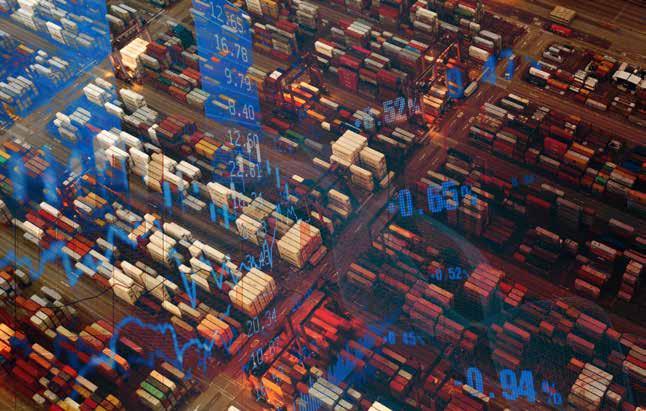
Perhaps the most immediate disruption in 2025 has been the renewed escalation of US–China trade tensions. The imposition of US tariffs earlier this year, including a 10 per cent duty on $300 billion of Chinese goods, has intensified global trade tensions, creating immediate disruptions across maritime supply chains. The sharp increase in tariffs, coupled with retaliatory measures, led to rising operational costs and heightened uncertainty among shippers and carriers.
The impact on maritime flows was swift and sharp. US ports, particularly along the West Coast, reported dramatic cost increases and throughput uncertainty. The Port of Los Angeles and Port of Long Beach, which together handle over 40 per cent of the nation's containerised imports, voiced concerns over disrupted procurement cycles and operational bottlenecks.
While a 90-day suspension of certain tariffs was brokered during negotiations in London, its residual impact lingers. Freight rates experienced wild swings as market actors scrambled to interpret fluctuating signals from Washington and Beijing. A recent federal court ruling found that aspects of the original Trumpera tariffs exceeded executive authority, injecting further uncertainty into the policy’s long-term legitimacy and thus, enforceability.
Caught in the crossfire are shippers, carriers, and logistics firms. Retailers warn of rising consumer prices while insurers flag heightened liability exposure. Supply chains are reconfiguring under pressure, all while the spectre of prolonged economic decoupling grows. This decoupling is marked by the gradual reorganisation of trade relationships, technological exchange, and industrial supply chains between major economies such as the US and China, driven by policy shifts, security concerns, and strategic realignment.
One of the starkest illustrations of maritime vulnerability has been the ongoing Red Sea crisis. Since the beginning of the year, persistent Houthi attacks and retaliatory airstrikes have rendered parts of the corridor hazardous and unpredictable. All
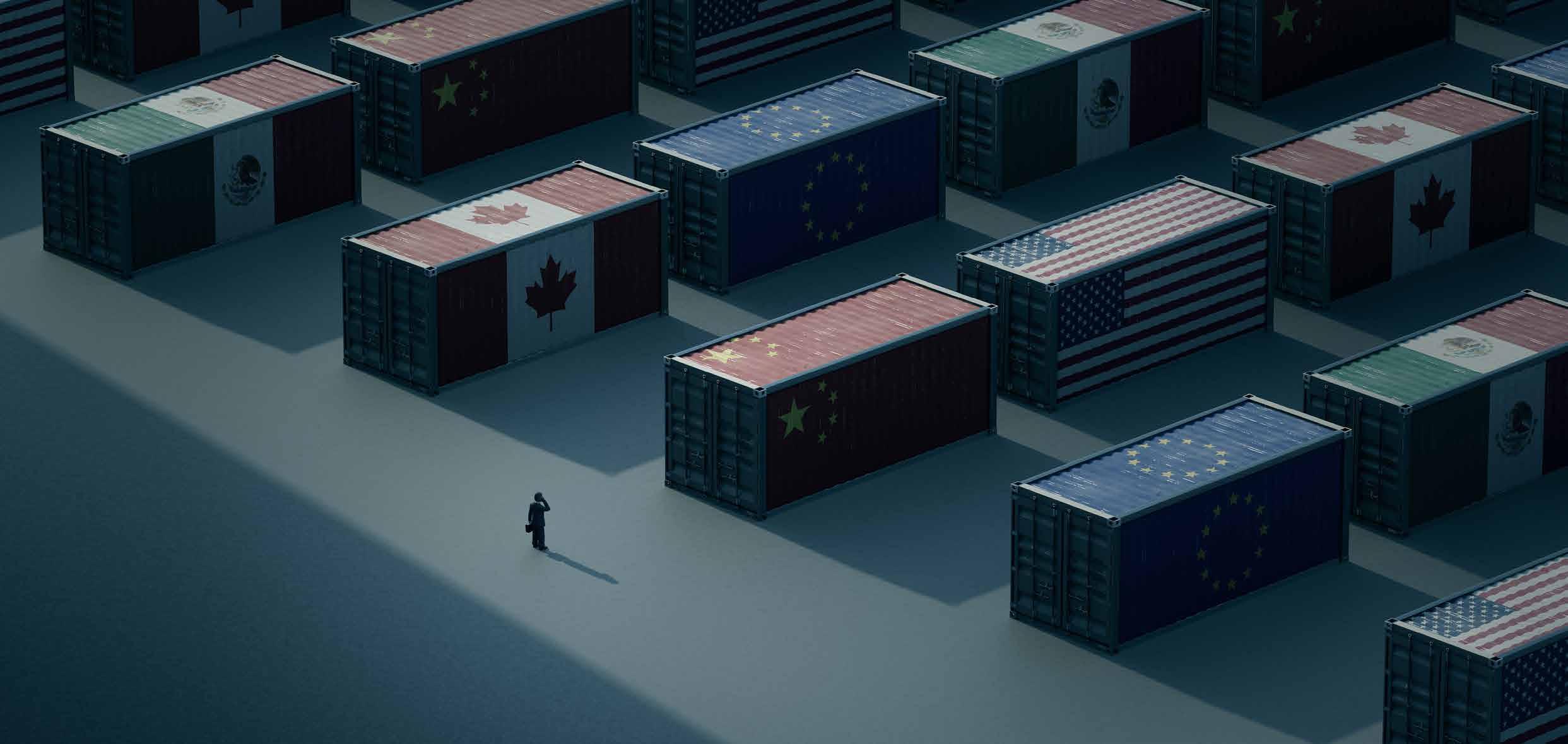
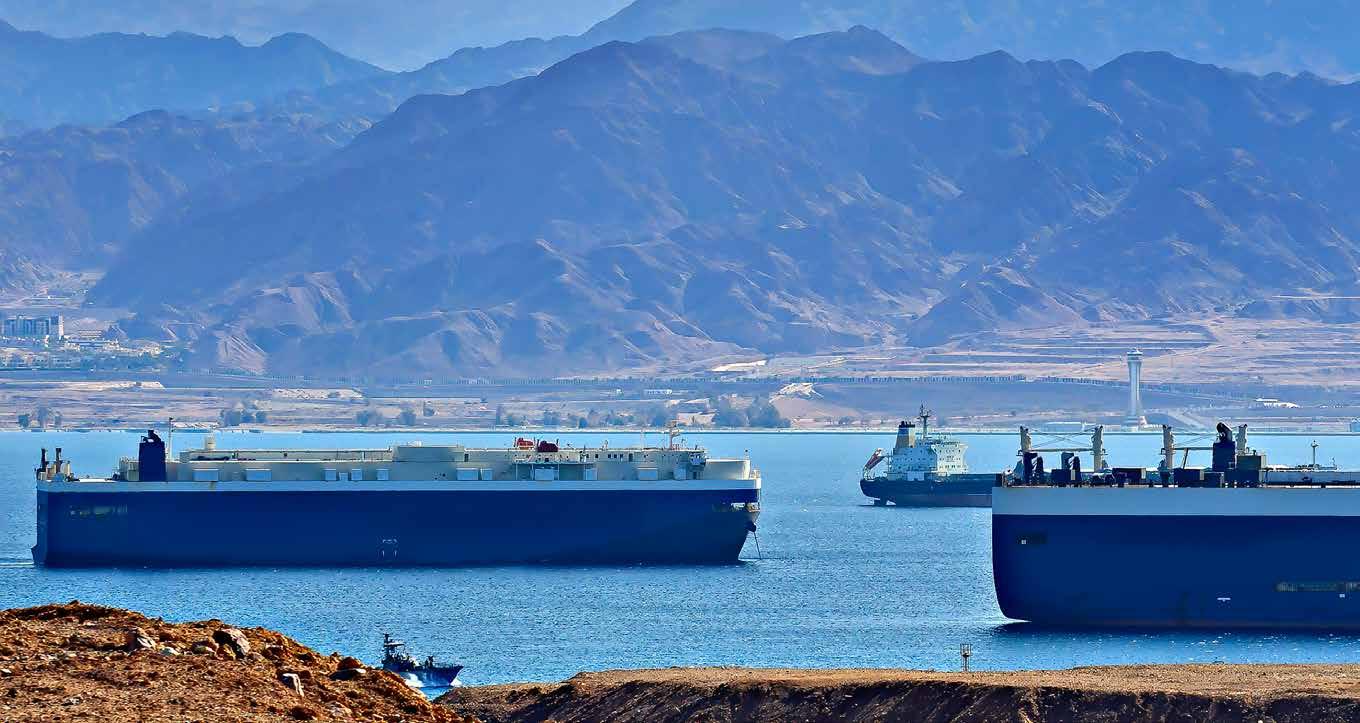
but recent strikes on Yemeni ports and vessels have triggered mass rerouting via the Cape of Good Hope, adding as much as 12 days to certain transit times.
The consequences have been severe: freight rates have surged, volumes through the Suez have dropped by an estimated 60 per cent, and war risk premiums continue to climb. While some operators have resumed limited transits with naval escorts, the International Maritime Organization (IMO) has called for restraint. In a recent statement, the IMO Secretary-General urged diplomacy over escalation, noting that continued instability could fracture vital east-west trade corridors beyond repair.
“THE RED SEA CRISIS HAS EXPOSED THE FRAGILITY OF GLOBAL BOTTLENECKS ONCE ASSUMED TO BE SECURE BY DEFAULT. WITH OVERLAND TRADE CORRIDORS IN CENTRAL ASIA BECOMING THE BENEFICIARIES OF RENEWED ATTENTION, THE KEY BALANCE OF INFLUENCE APPEARS TO BE SHIFTING, NOT BY ECONOMIC STRATEGY, BUT BY VIOLENCE.”
Margherita
Bruno, Managing Editor, Port Technology International
For port authorities, vessel operators, and shipping companies, the priority is clear: stay prepared and secure the
uncertain. The sea remains our oldest trade route, but in 2025, it became a battleground for influence as much as a conduit for goods.
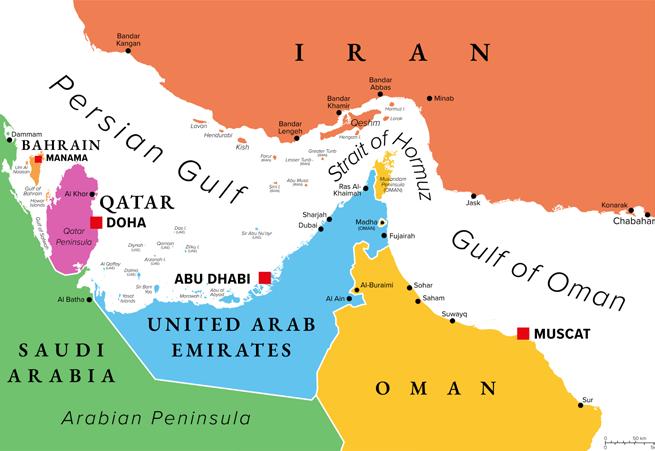
Meanwhile, tensions between Iran and Israel have jeopardised the viability of the Strait of Hormuz, a vital waterway responsible for roughly 20 per cent of the world’s oil trade.
The threat of disruption has triggered widespread concern. In April, the US urged China to dissuade Iran from any potential closures of the strait, warning of global economic shockwaves should maritime flows be obstructed. While analysts maintain that a full closure remains unlikely, the cost of concern has already manifested economically.
Maritime insurers have responded by raising premiums, particularly for vessels transiting the Persian Gulf. Spot container rates on key lanes such as Asia–Europe and the Mediterranean have seen sharp volatility, and recent satellite data shows congestion building around alternative routes. Some shipping lines have begun rerouting high-value vessels or adjusting transit schedules to mitigate exposure.
Security risks are also evolving. Repeated GPS jamming incidents, attributed by analysts to regional actors, have affected hundreds of vessels, impairing navigation systems and prompting maritime authorities to issue safety alerts. June 2025 saw intensified jamming activity, fuelling concerns over electronic warfare capabilities in congested sea lanes, leaving vessels disoriented and at risk of collision or misidentification.
Despite repeated warnings from operators and maritime security firms, militarily leveraged technology continues to compromise navigation systems, affecting both commercial and naval traffic.
The Iran–Israel standoff has underscored the fragility of the Strait of Hormuz, not only as a conduit of trade but as a strategic litmus test of regional stability.
More than two years after Russia’s invasion of Ukraine, the Black Sea remains a highly unstable zone. Although EU sanctions have weakened the socalled “dark fleet” of Russian vessels that covertly transport crude oil and grain, they have not fully stopped these operations. The Port of Odesa, a vital hub for Ukraine’s agricultural exports, has endured renewed missile attacks, including two this spring that tragically killed three port workers.
The European Commission has proposed the establishment of a Black Sea Maritime Security Hub aimed
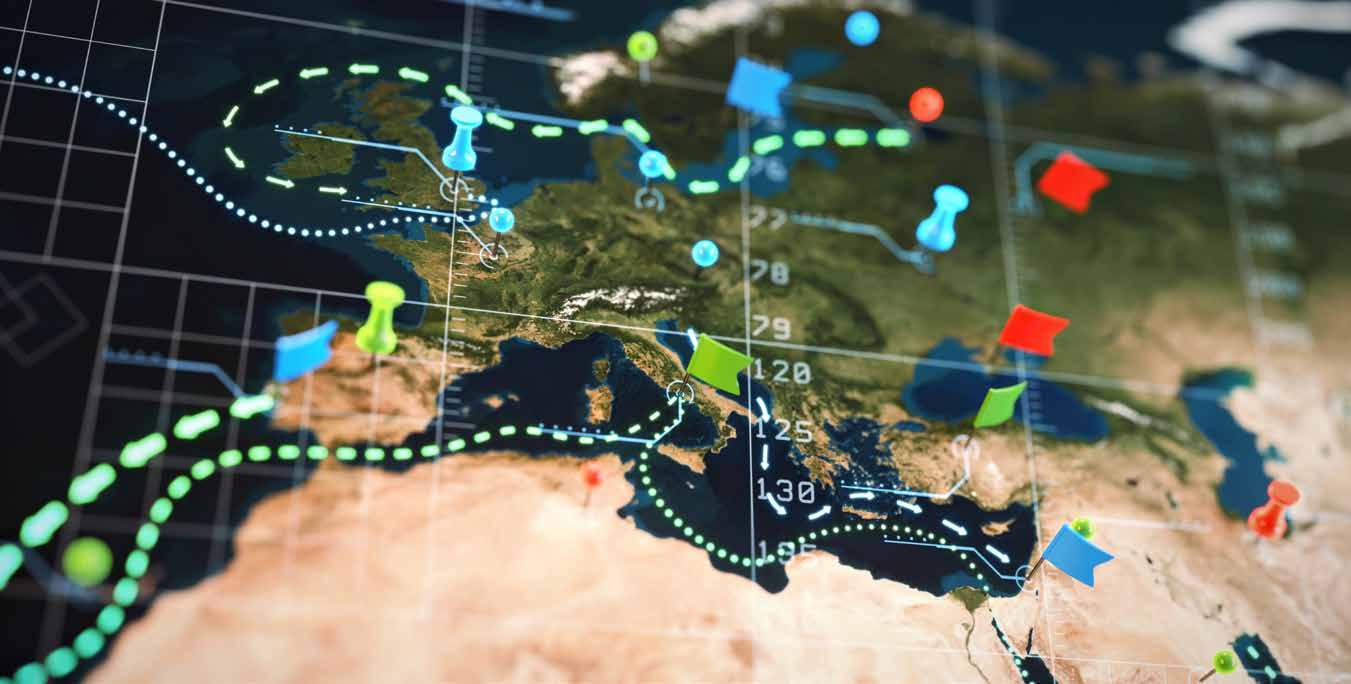
at enhancing coordination of vessel tracking, intelligence sharing, and emergency response to counter ongoing Russian threats in the region. This initiative seeks to strengthen regional maritime security by centralising efforts across EU member states and partners. While the proposal marks a significant step toward safeguarding critical trade routes, implementation timelines remain uncertain amid complex geopolitical dynamics.
“MARITIME TRADE IS INCREASINGLY SHAPED BY GEOPOLITICAL FAULT LINES, MAKING ADAPTABILITY AND STRATEGIC FORESIGHT ESSENTIAL FOR INDUSTRY RESILIENCE.”
Dom Magli, News Editor, Port Technology International
Geopolitical conflict has been matched by a rise in non-traditional threats, most notably onboard fires and cyberattacks. The year began with a series of maritime fires, including on the Wan Hai 503, and a fatal North Sea accident that sparked international scrutiny over hazardous cargo classification and crew training standards.
Meanwhile, cyberattacks on port infrastructure have intensified. Marlink has reported a surge in AI-enhanced phishing schemes, ransomware deployments against terminal operating systems, and disruptions to GPS and navigation software. In response, the International Association of Ports and Harbors (IAPH) issued revised cyber resilience guidelines, though uptake remains arguably inconsistent.
These developments underscore a new reality: even in the absence of conflict, infrastructure sabotage, data breaches, and systemic risk are part of the maritime risk outlook.
As we look ahead to the second half of 2025, one thing is clear: geopolitics is no longer the backdrop to global shipping; it is the driver. From Houthi missile launches to presidential tariffs, the forces shaping maritime trade are now deeply political, unpredictable, and consequential.
Ports are no longer just trade facilitators; they’re geopolitical actors, albeit passive. The resilience of global supply chains now depends as much on political foresight as it does on technological innovation.